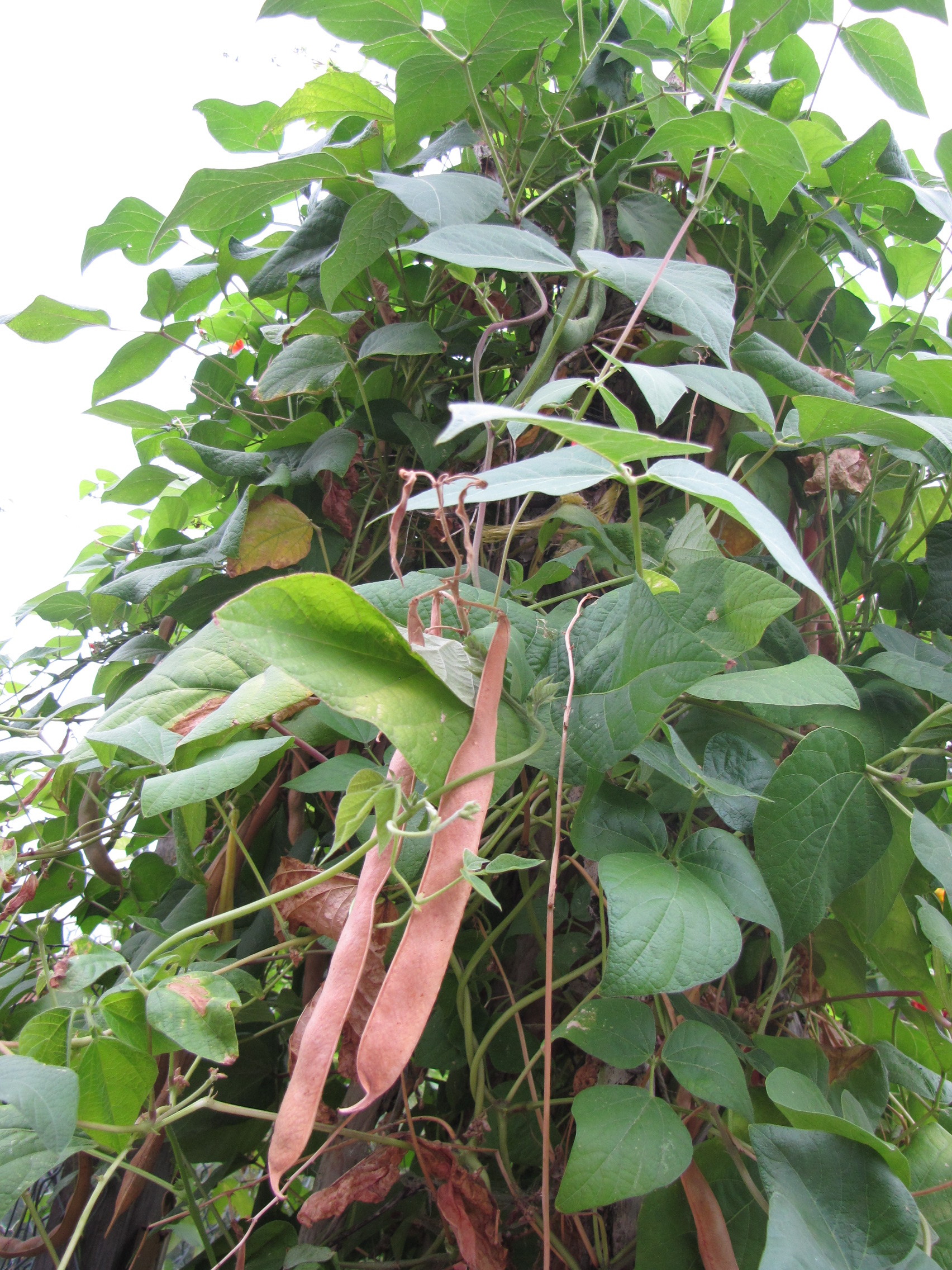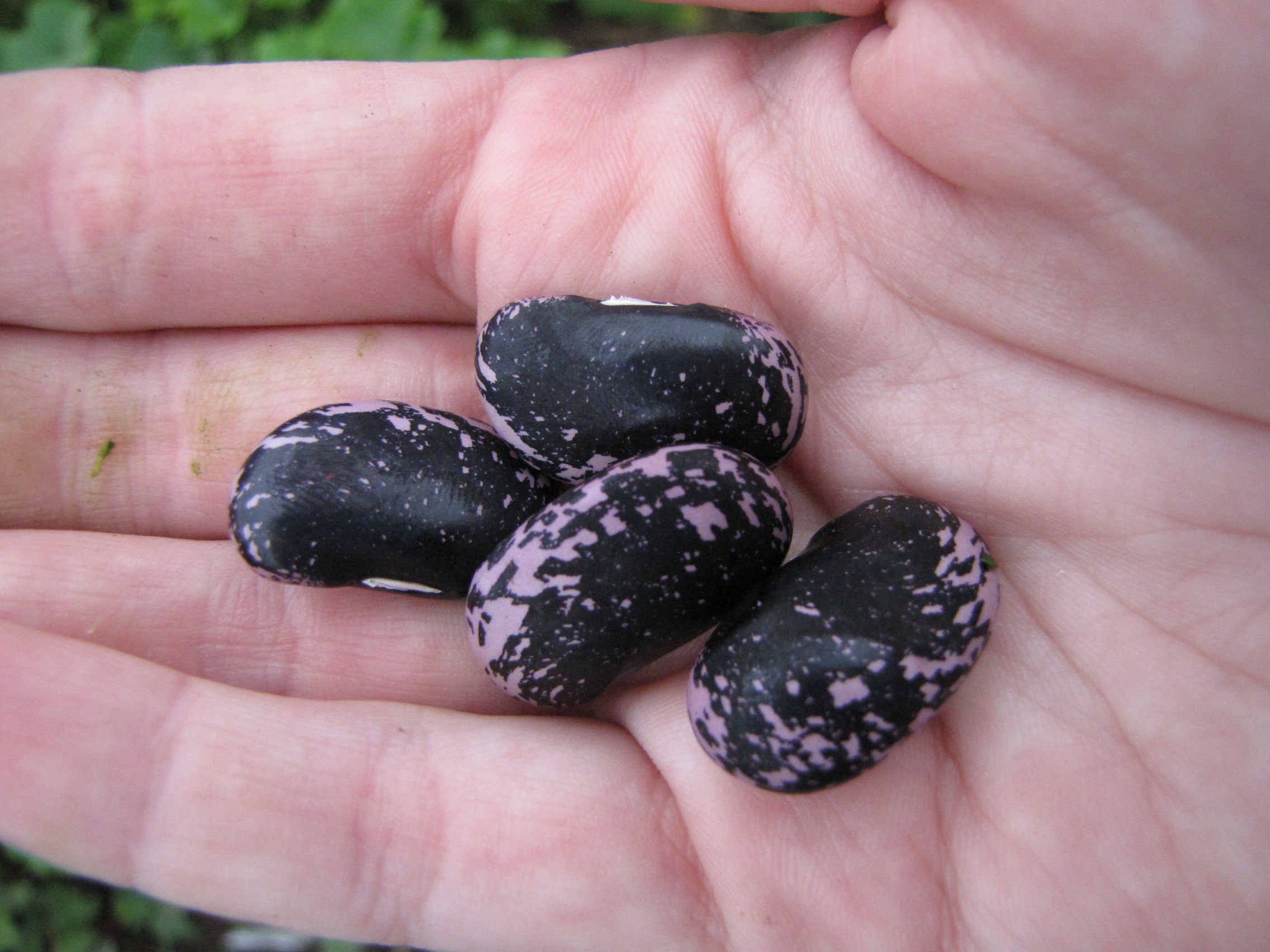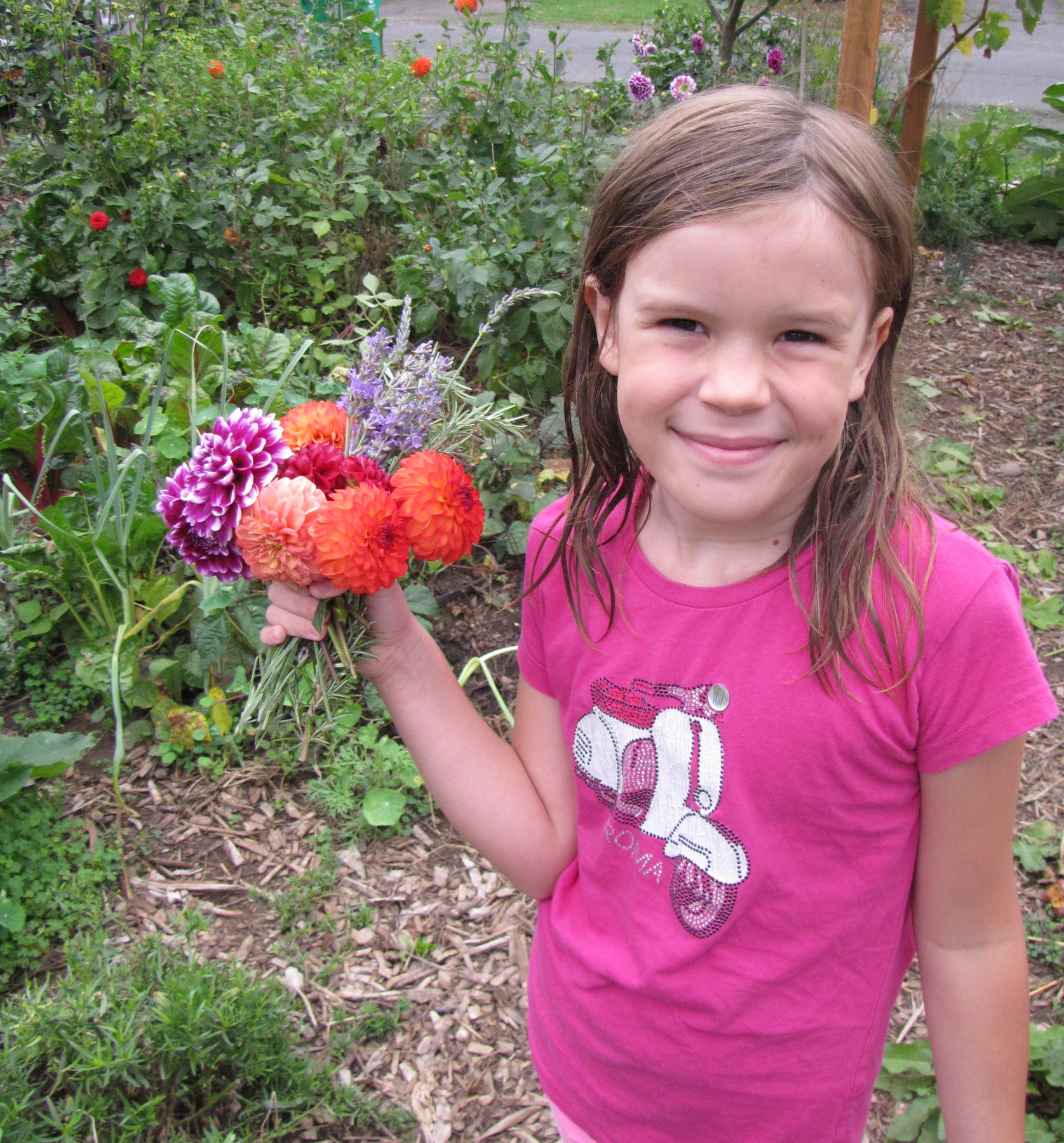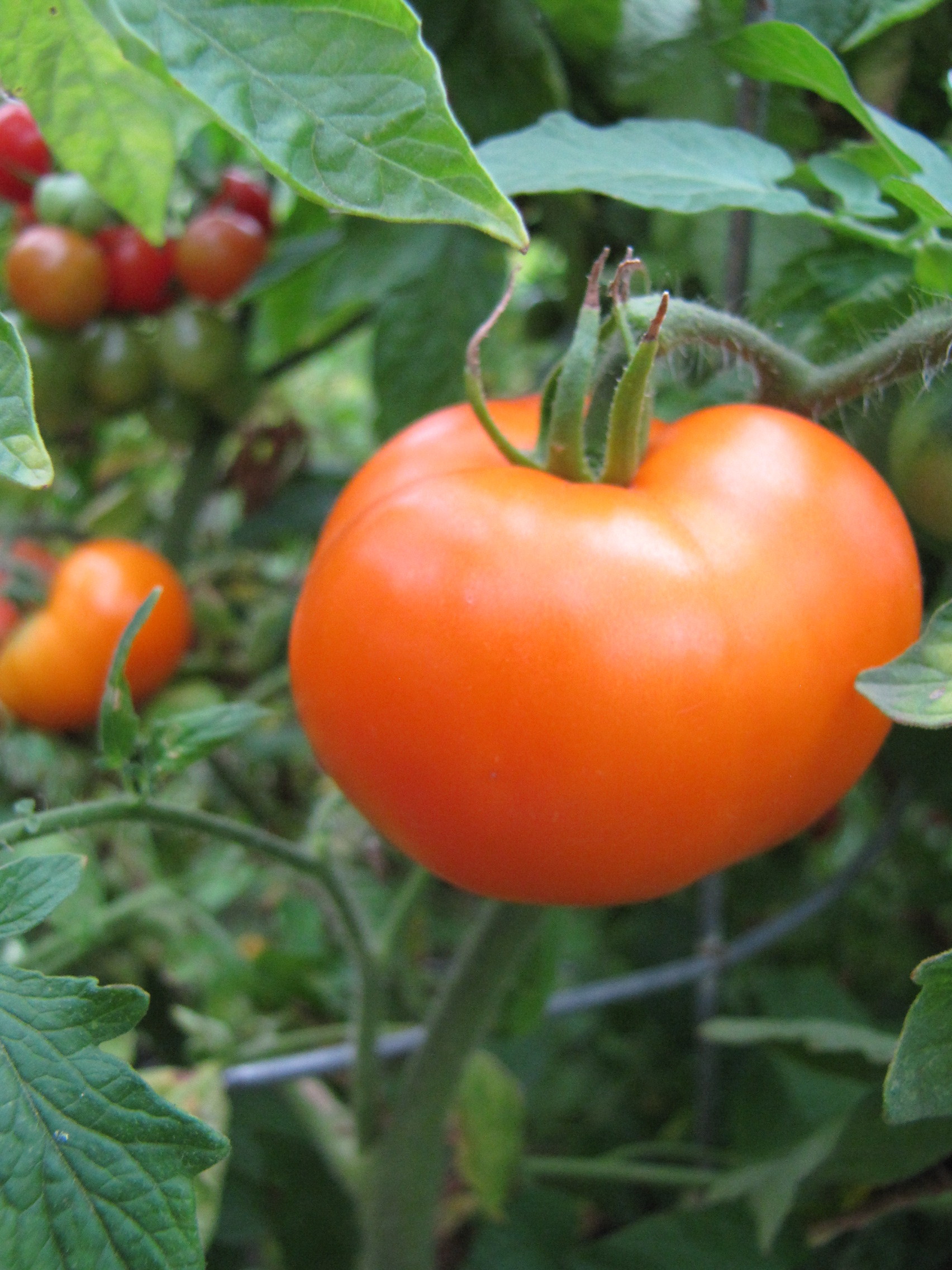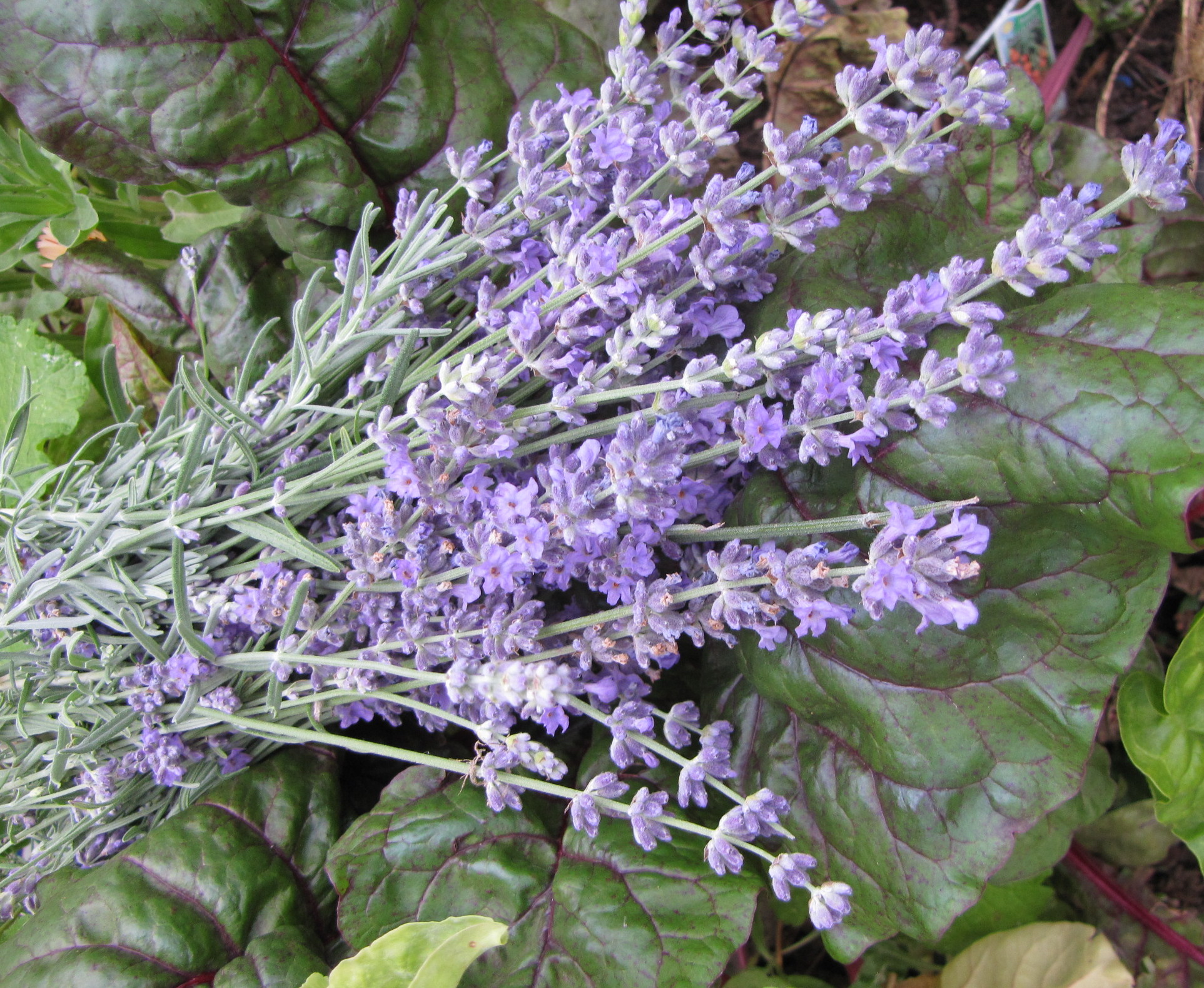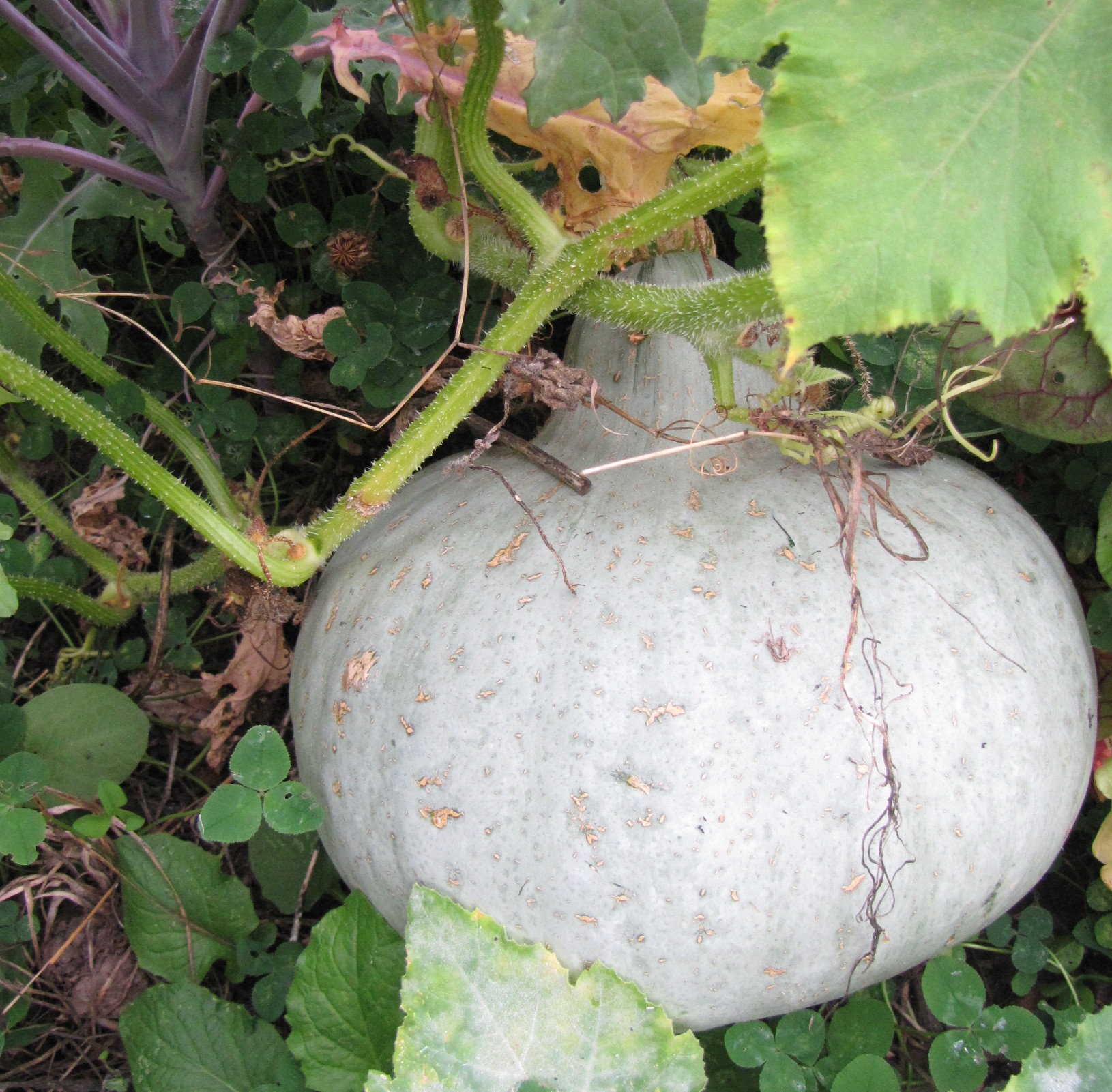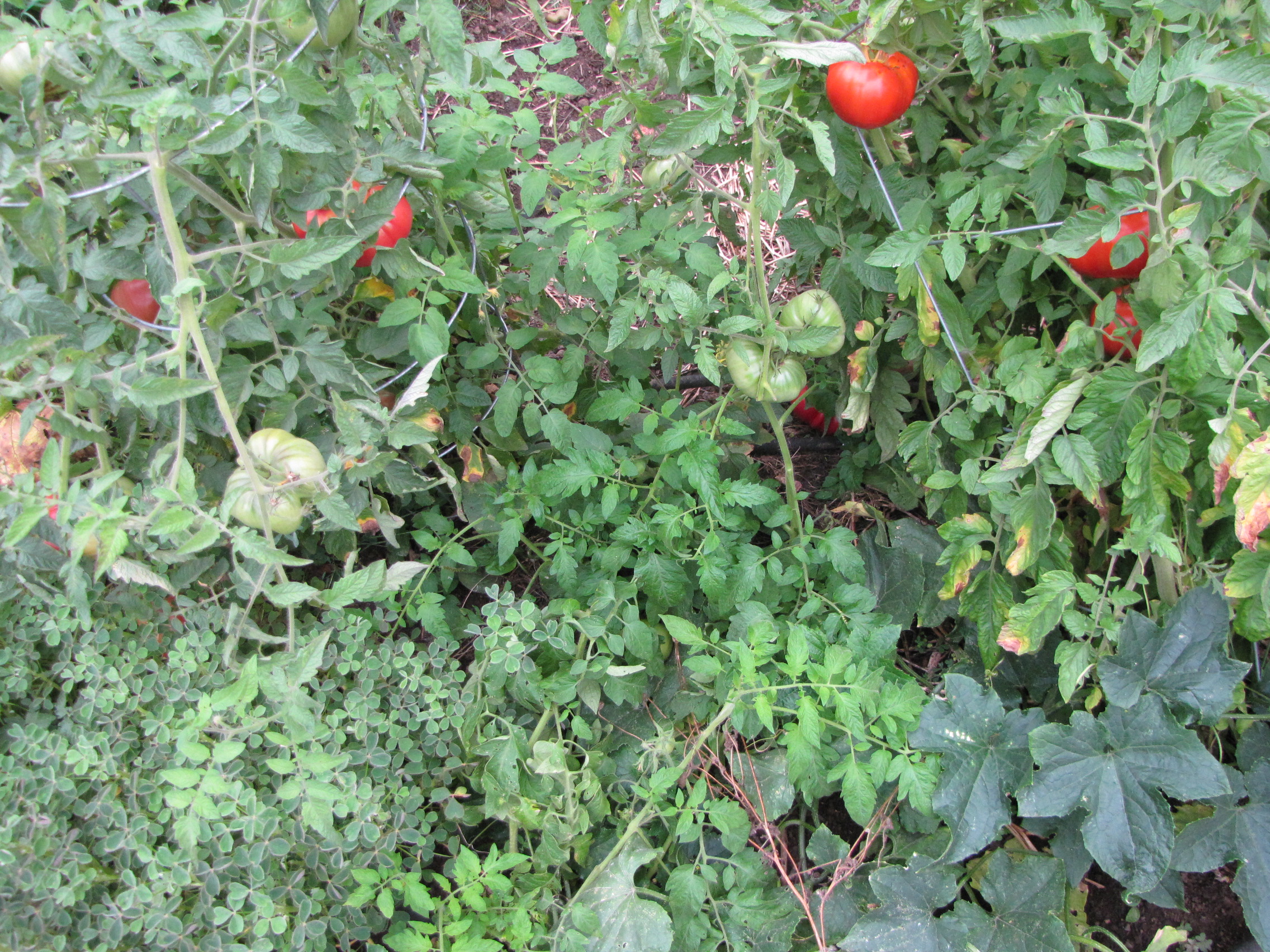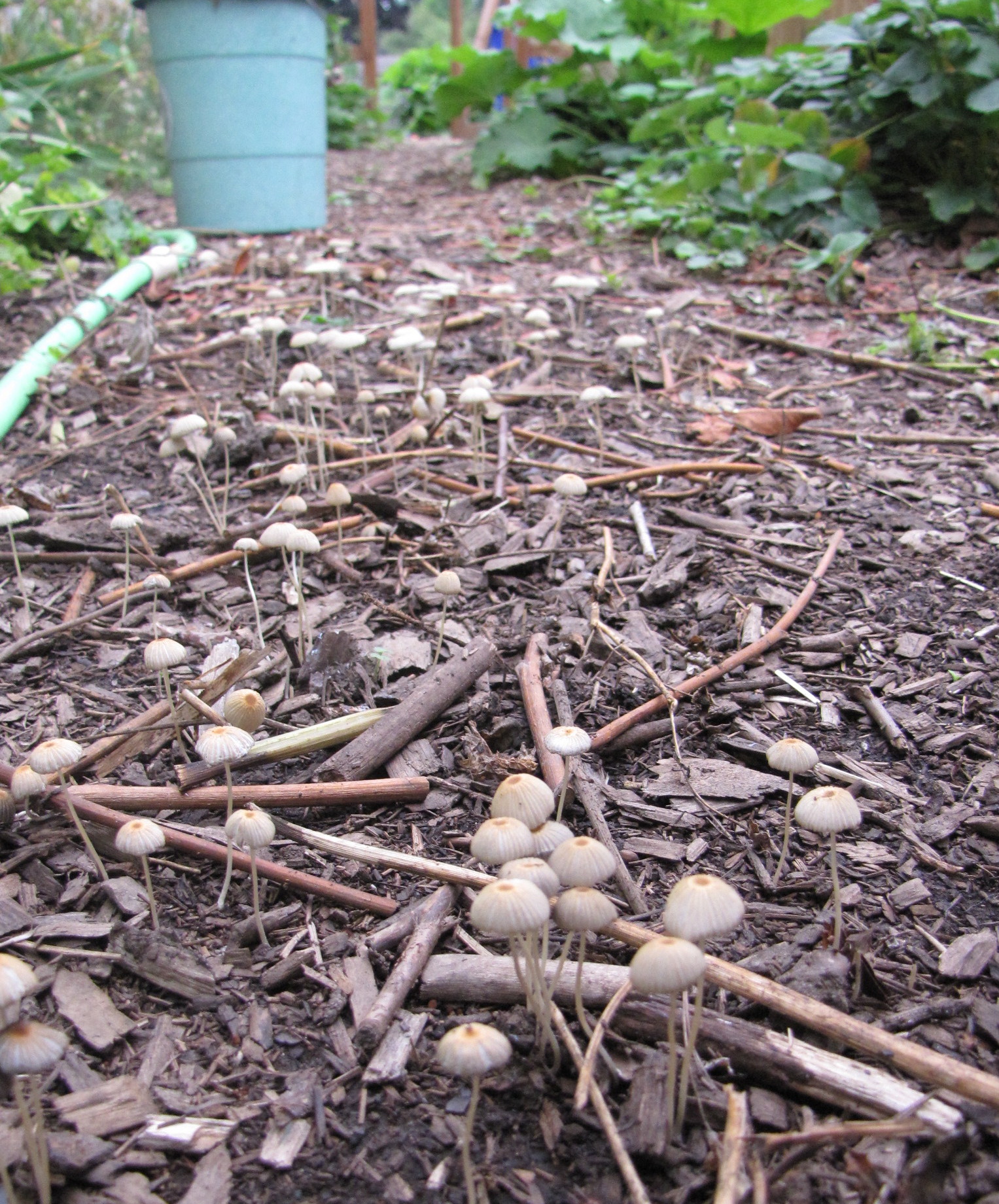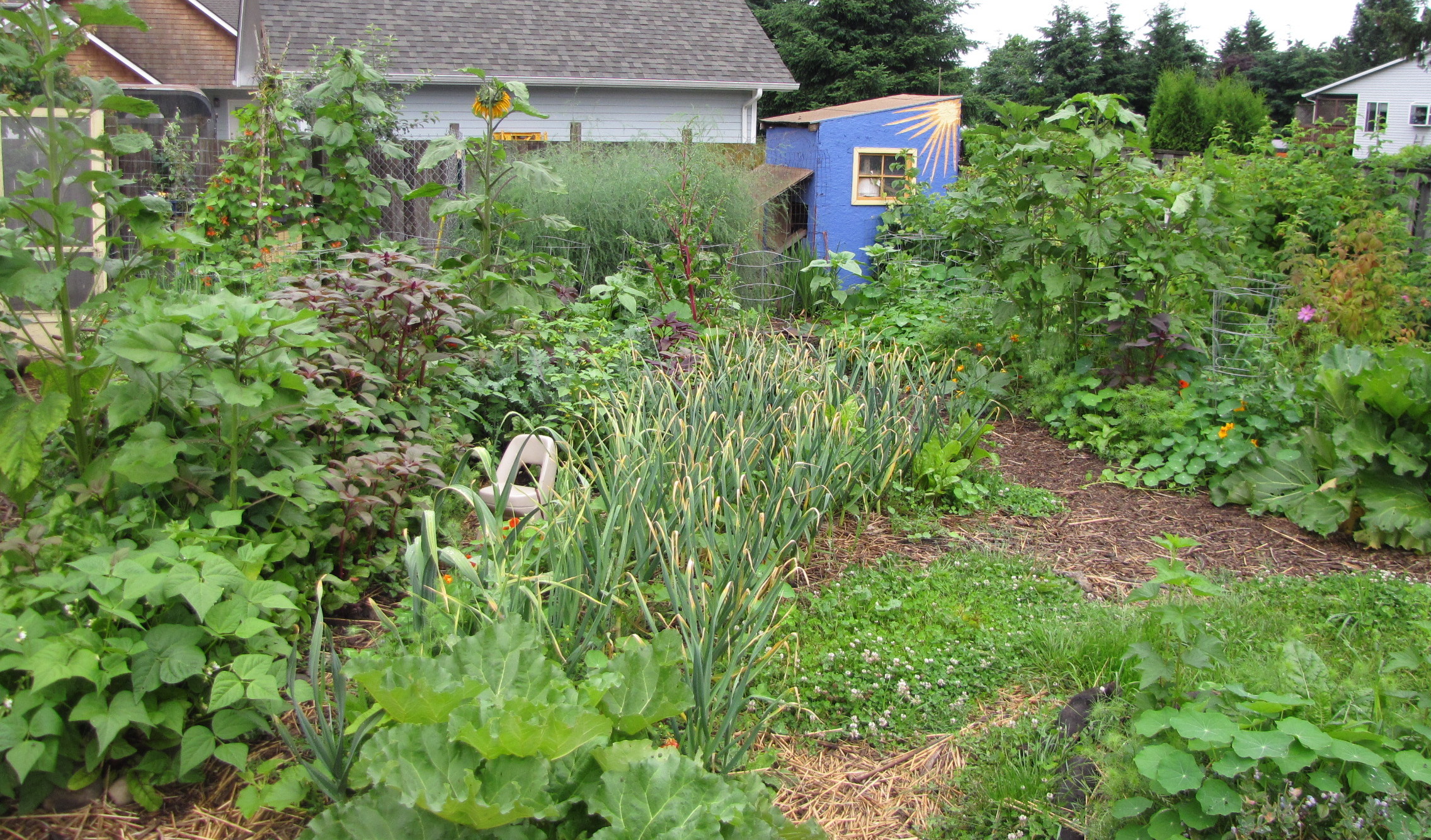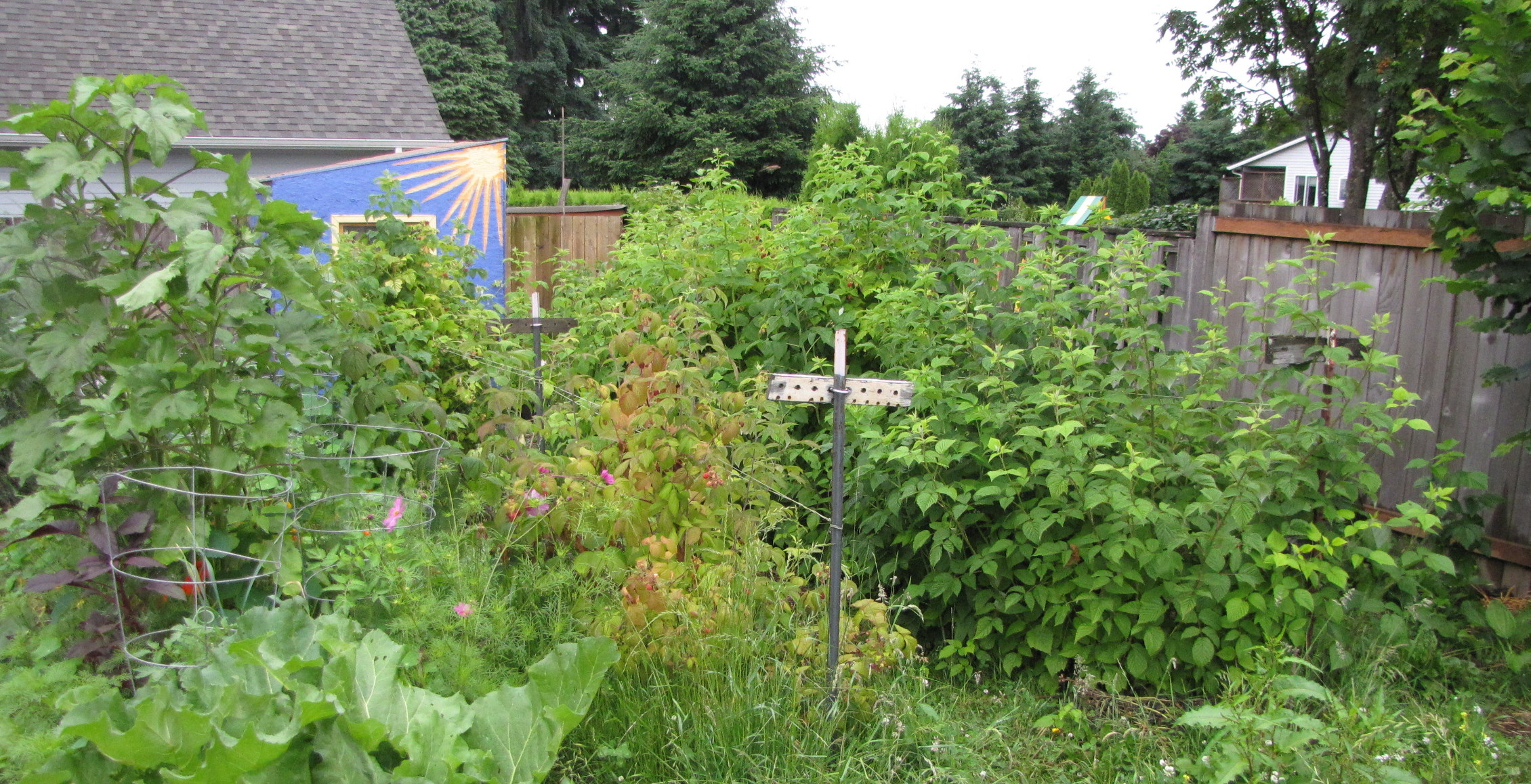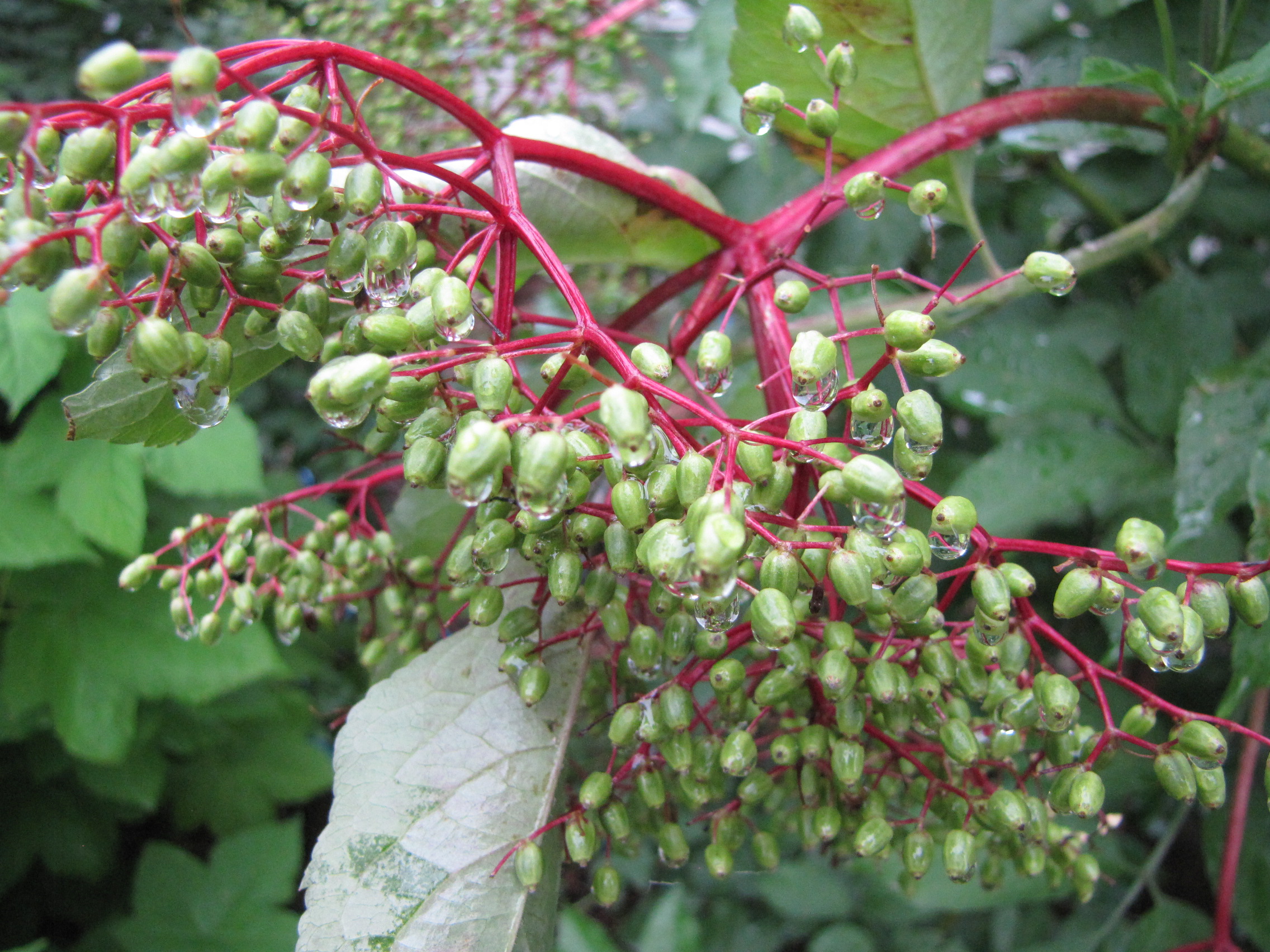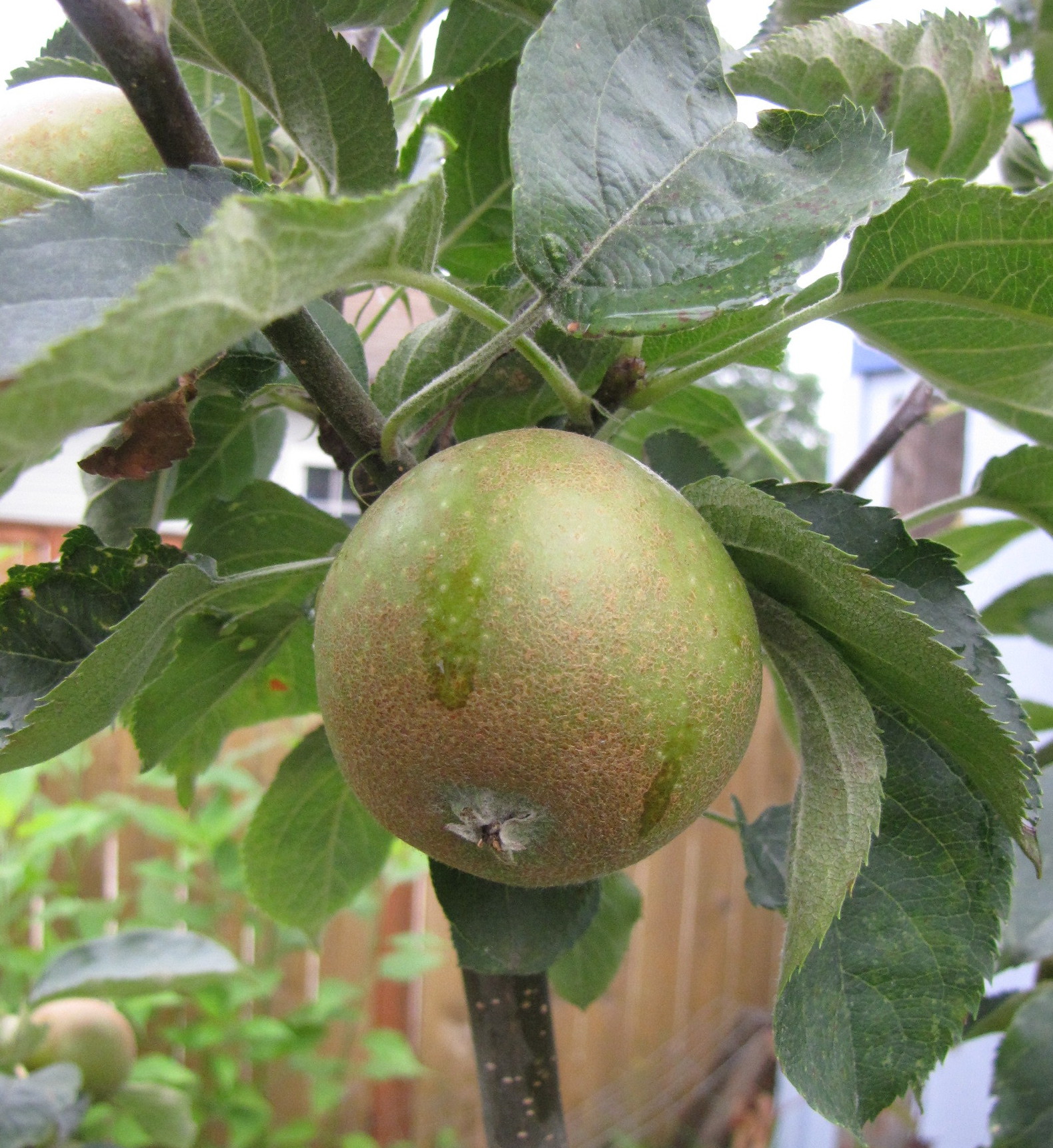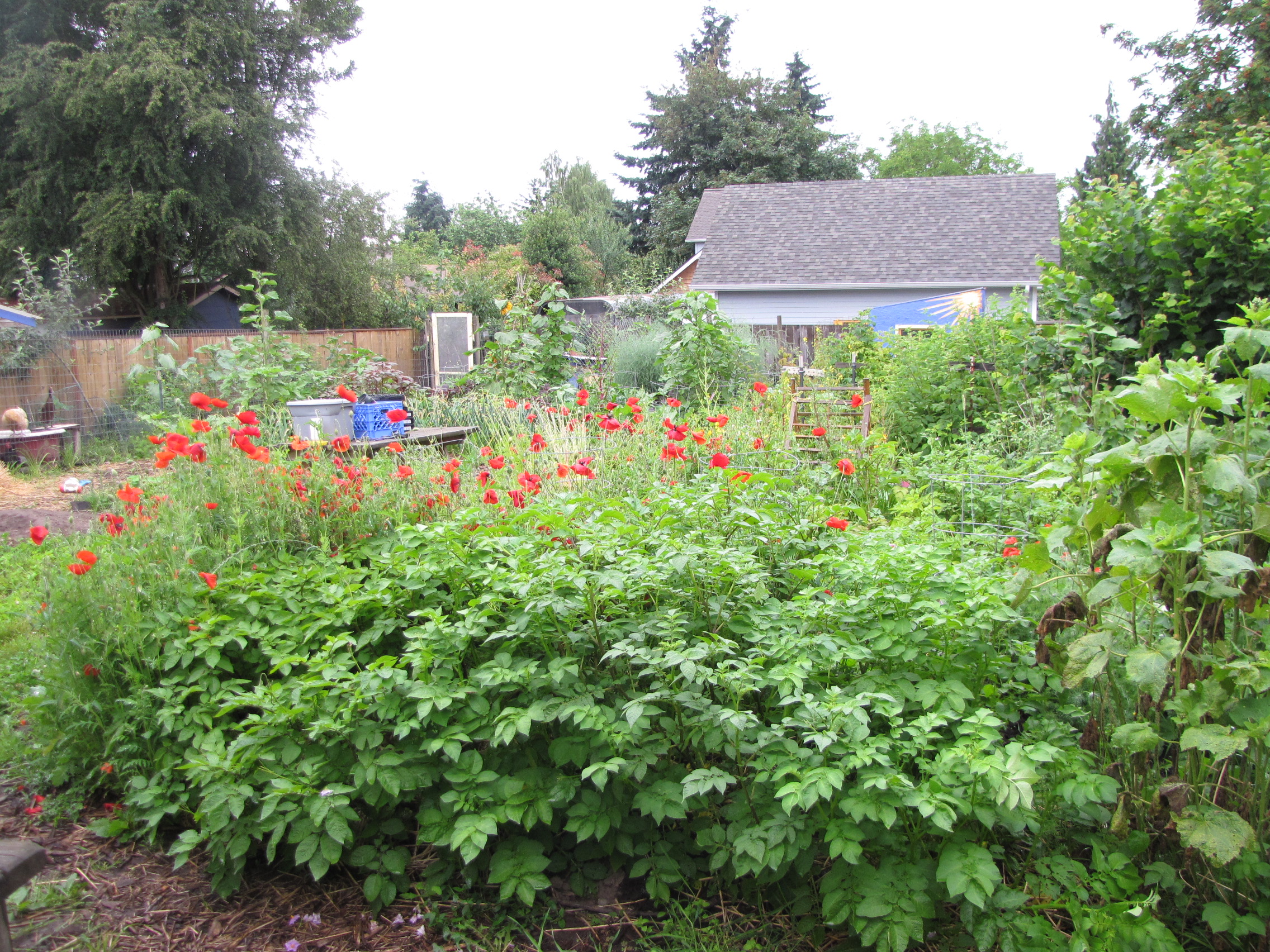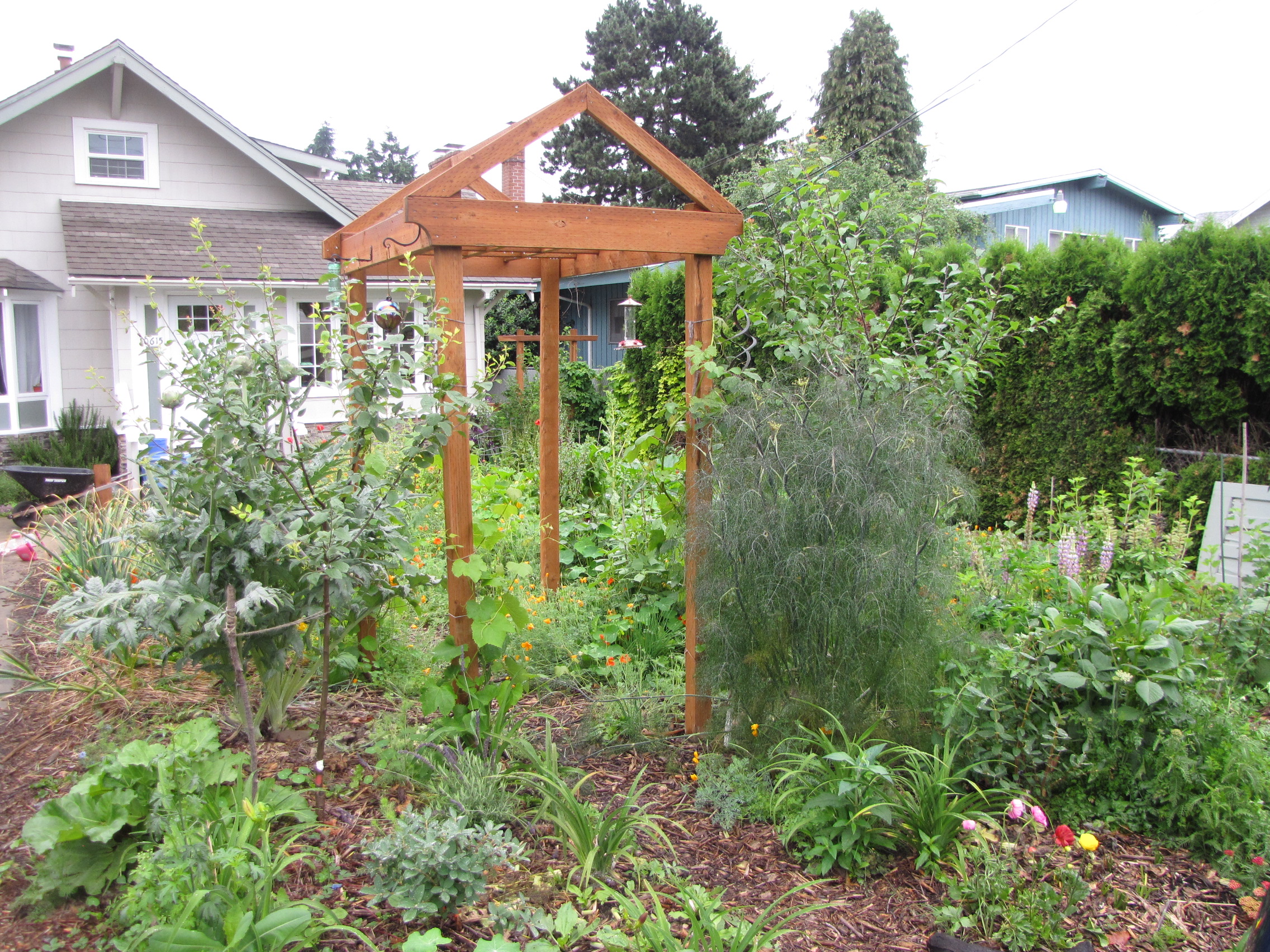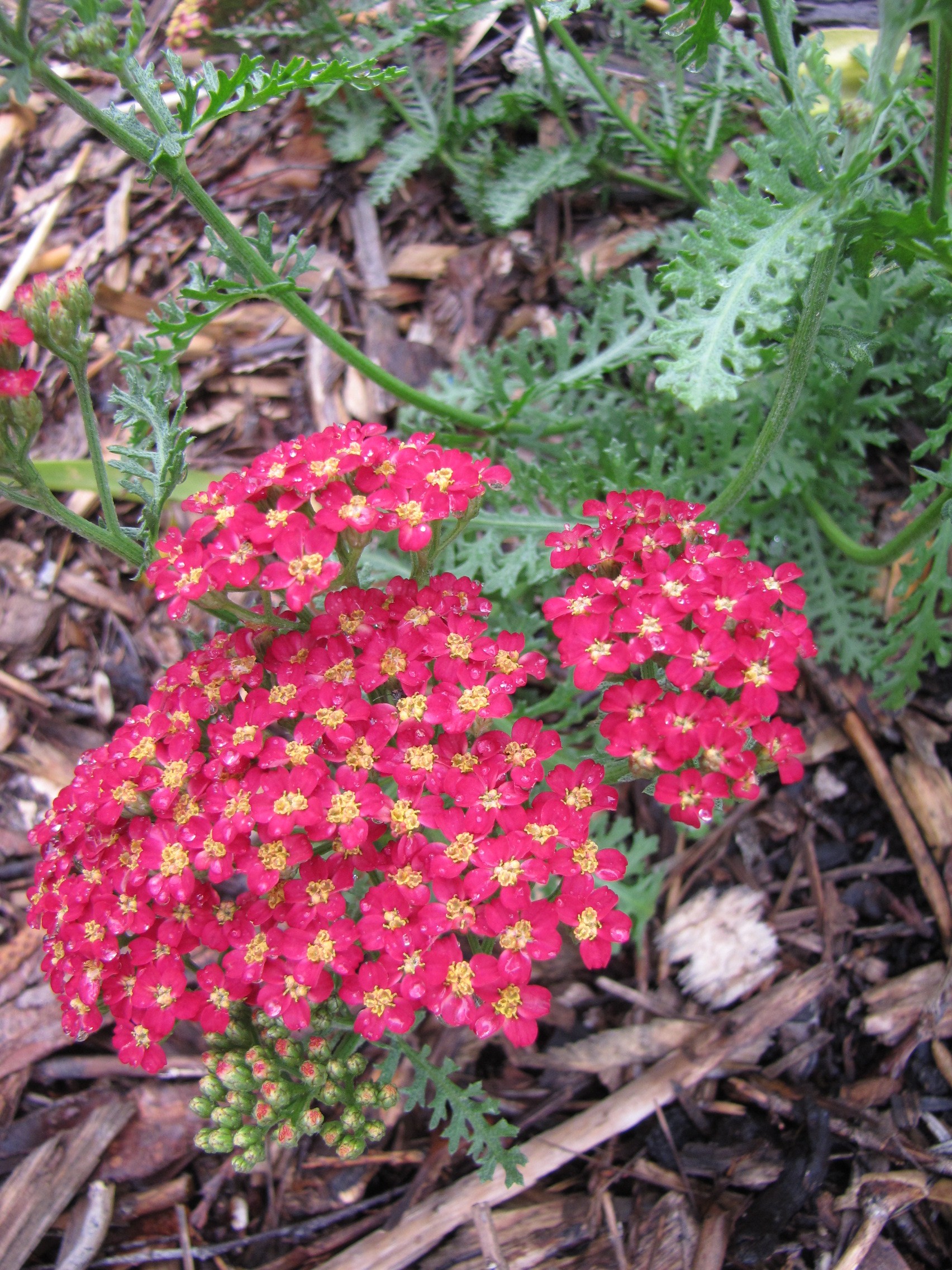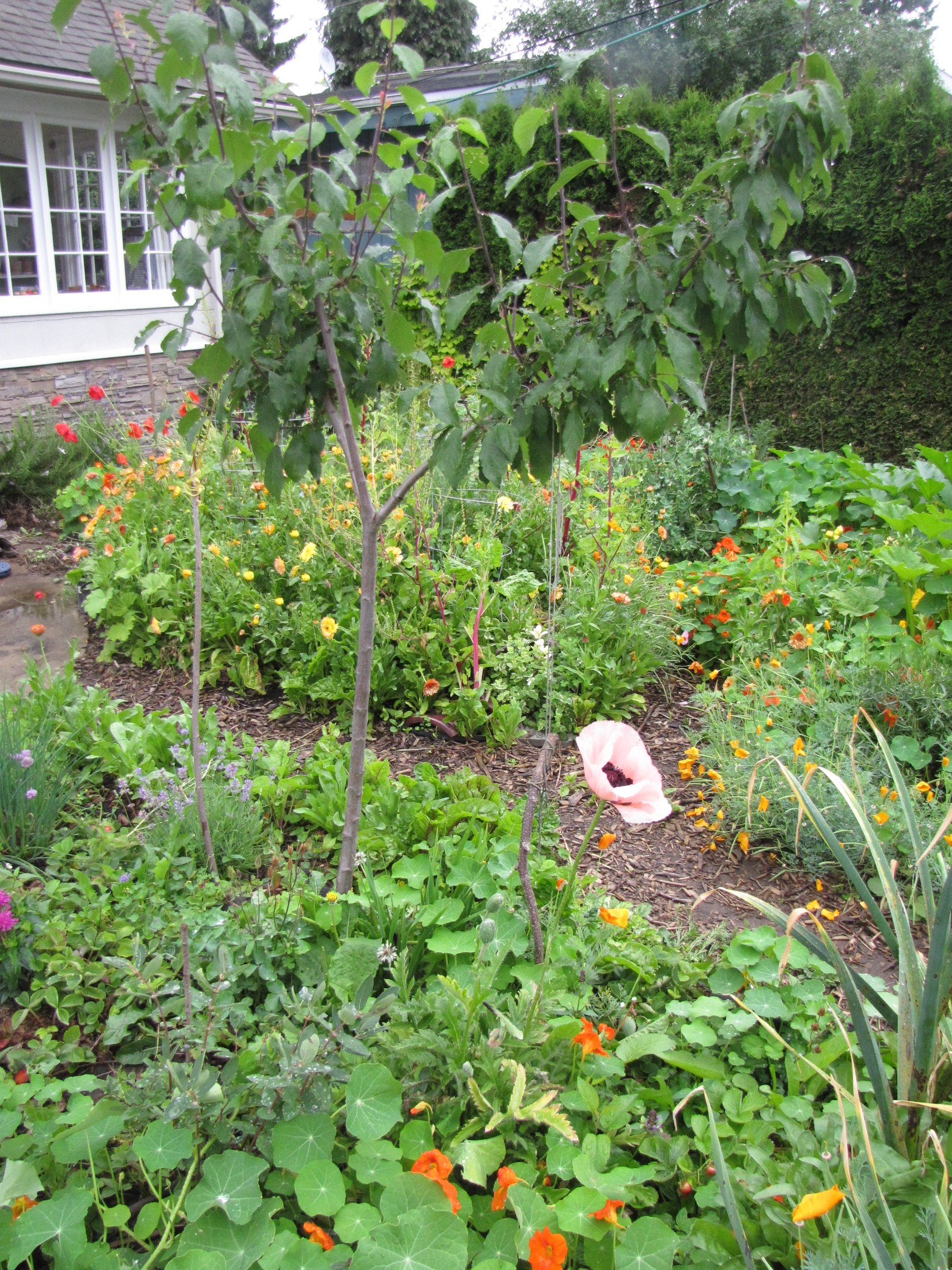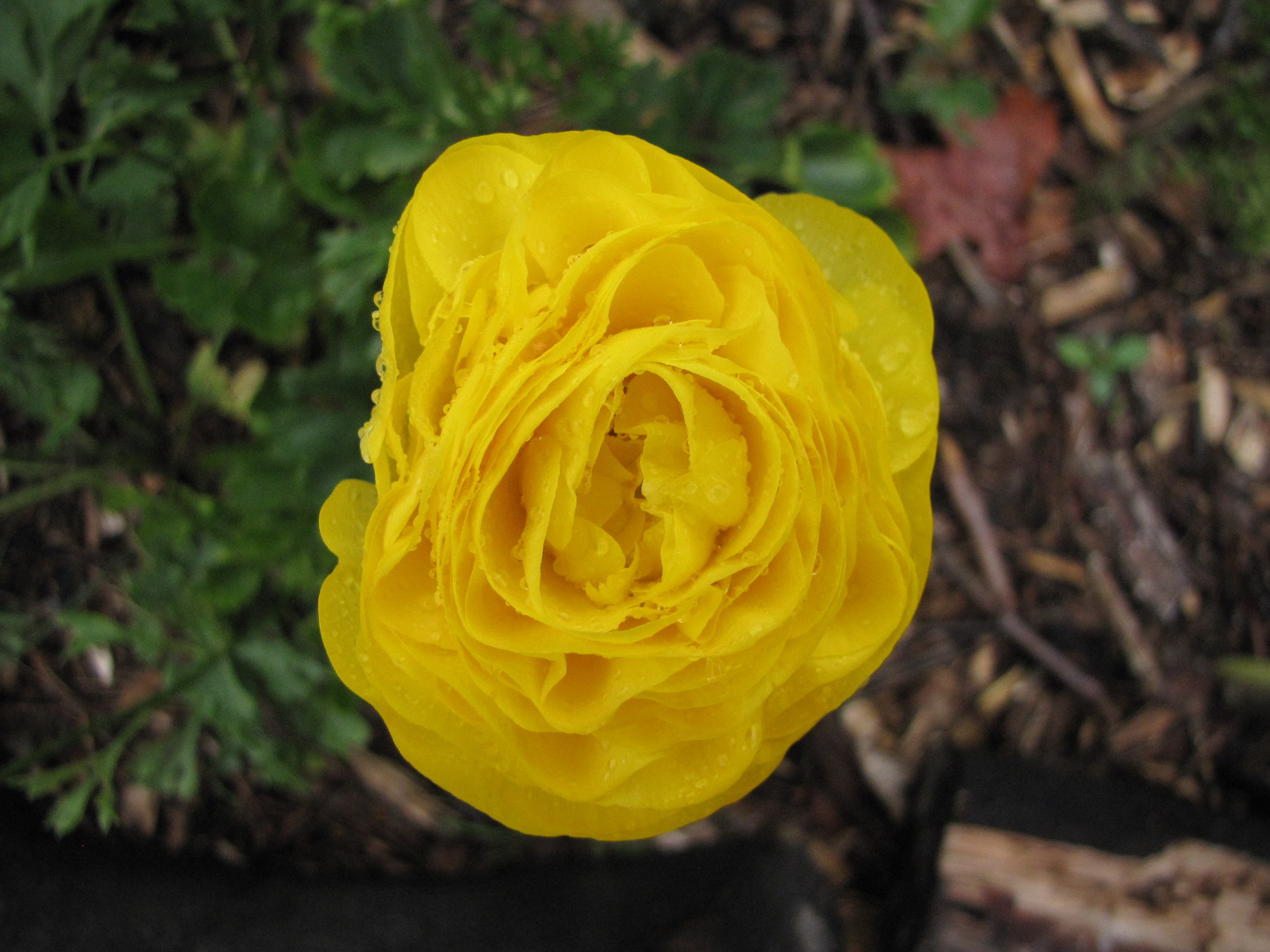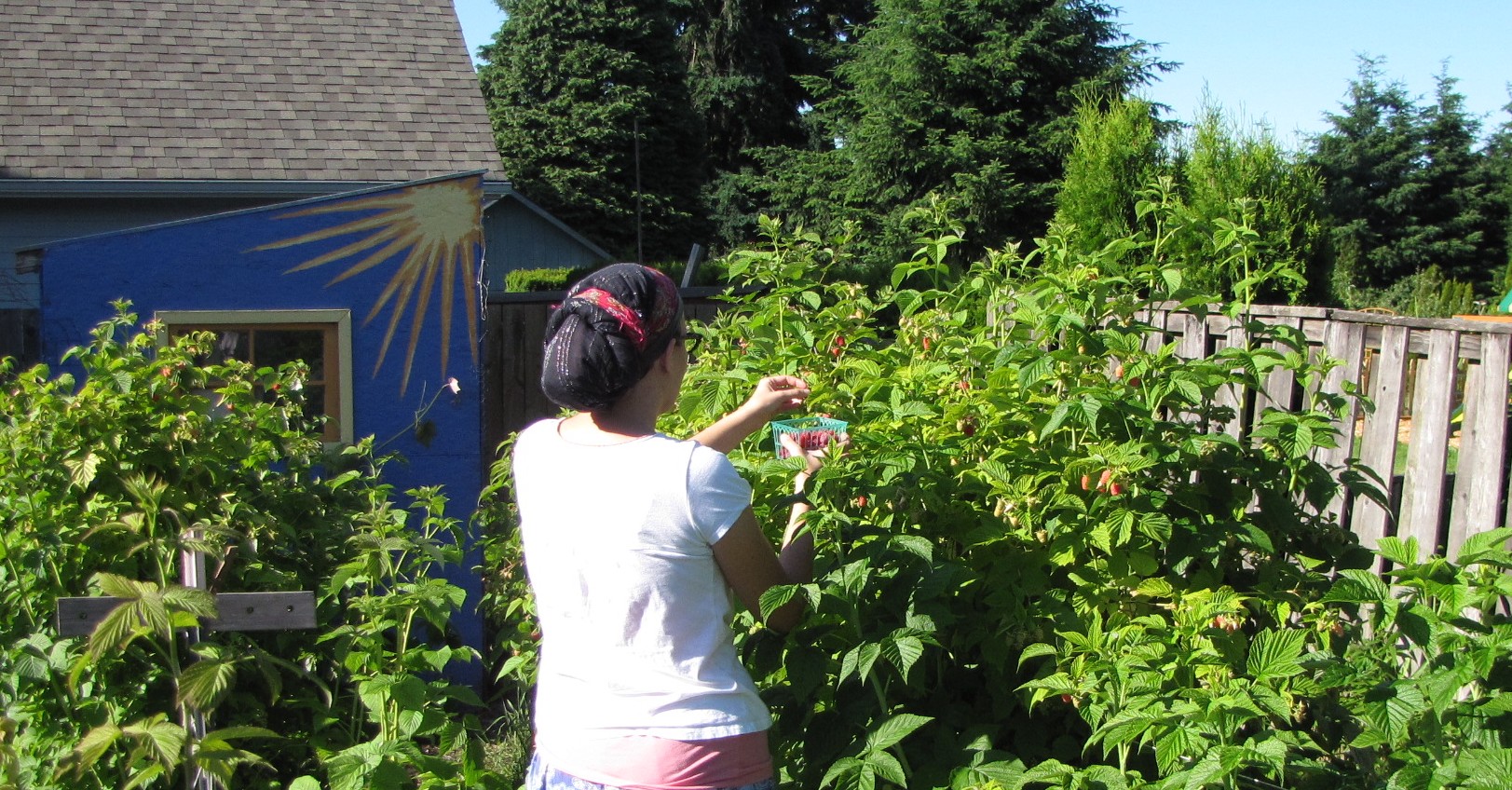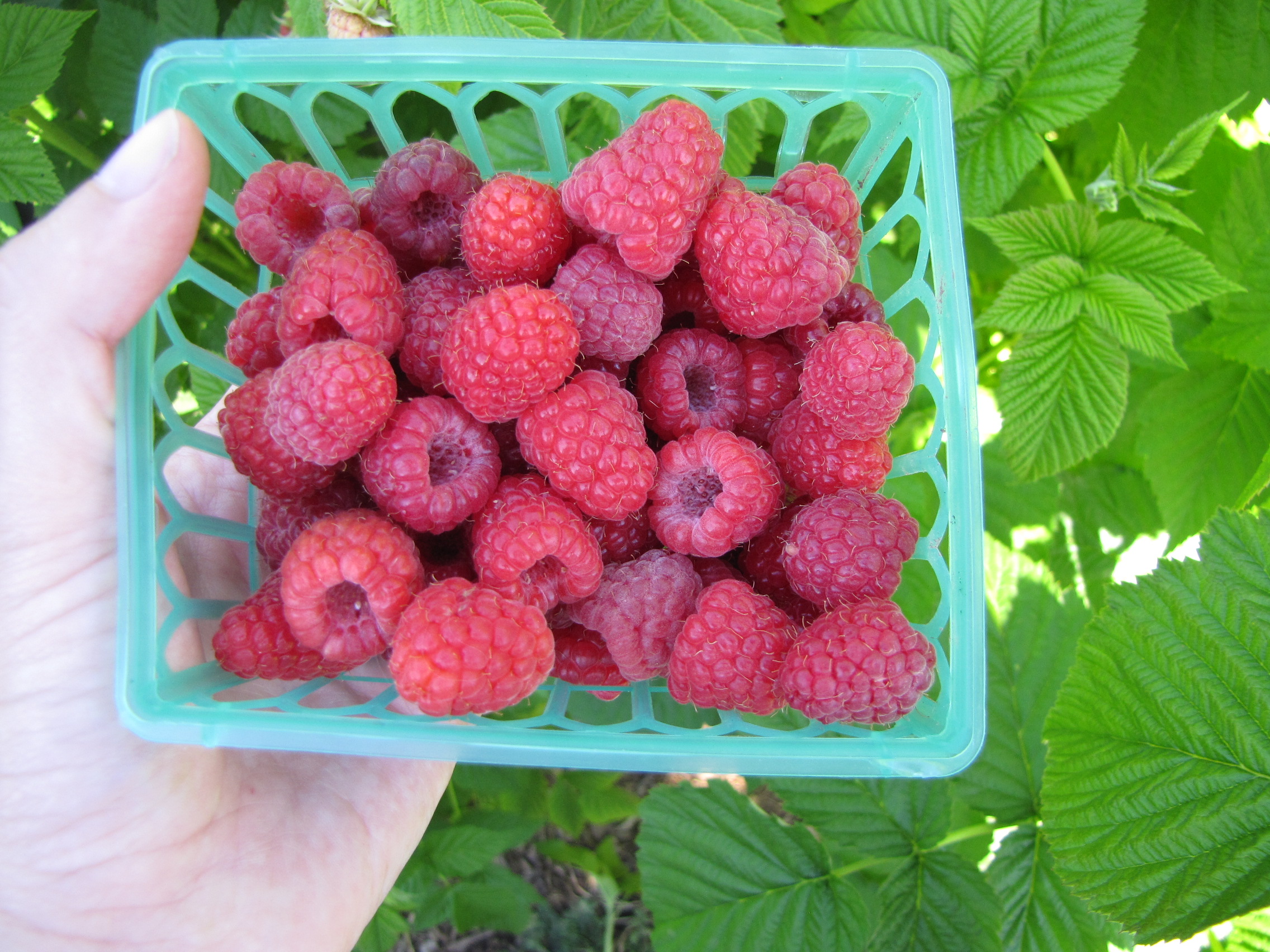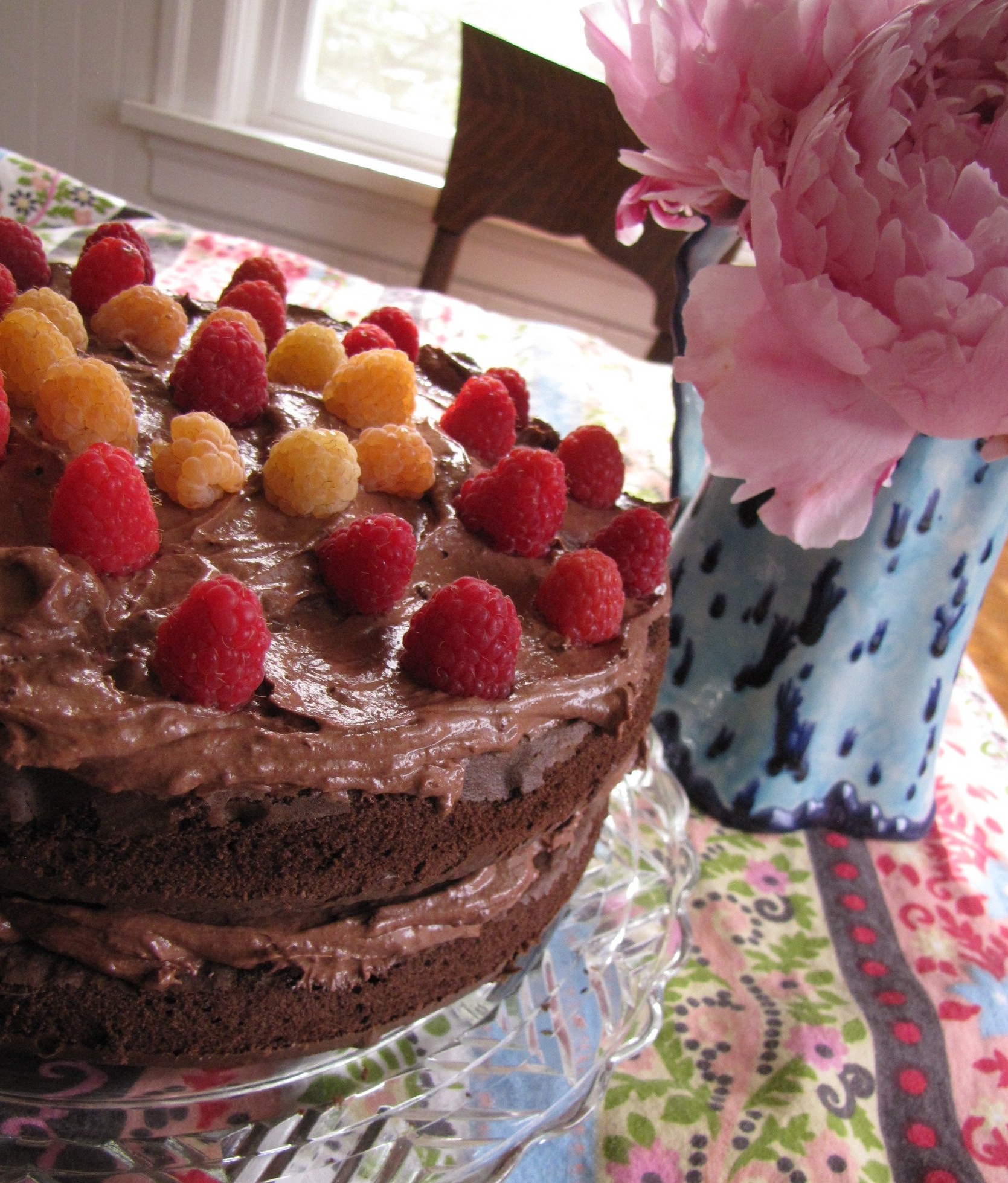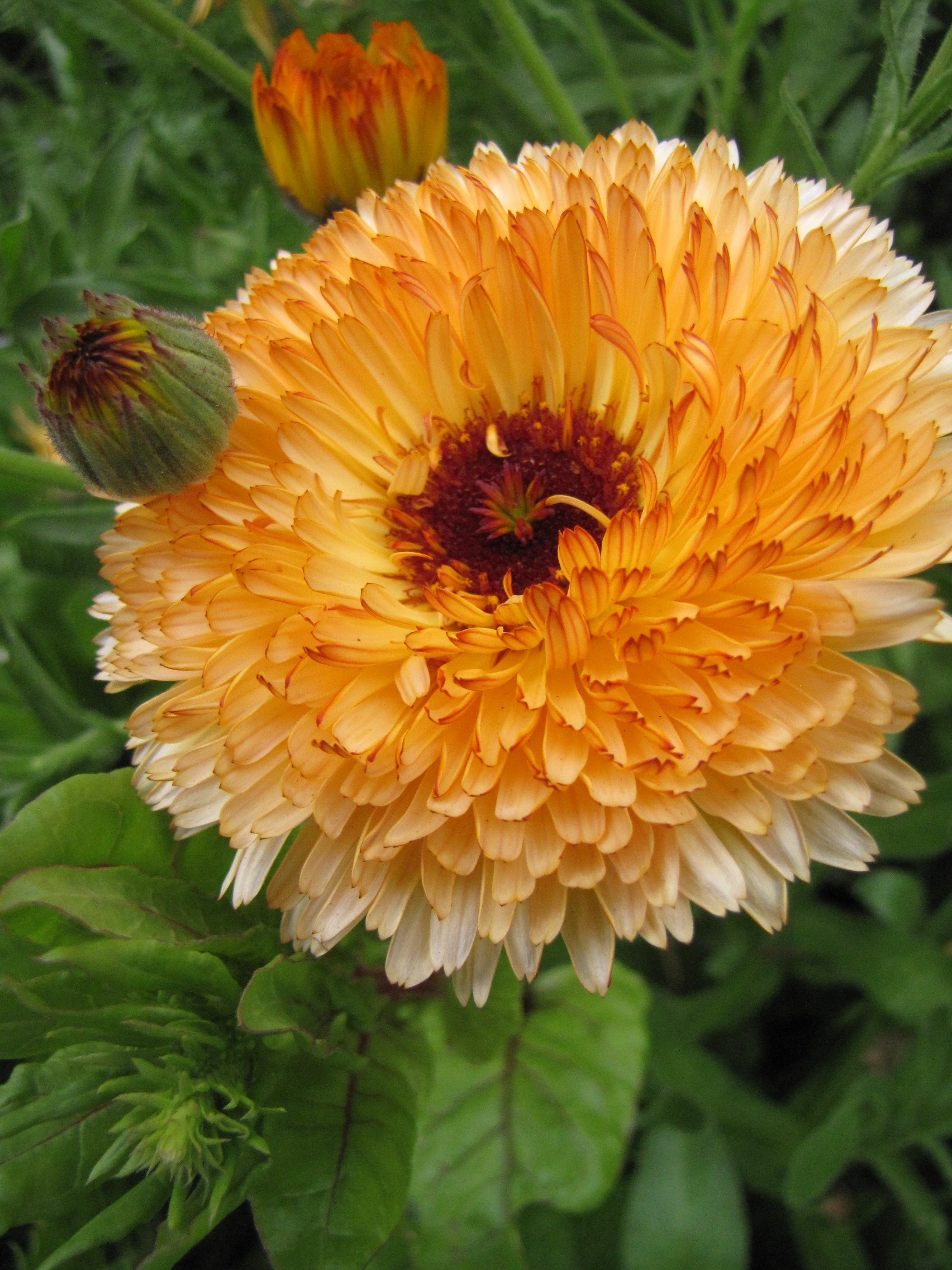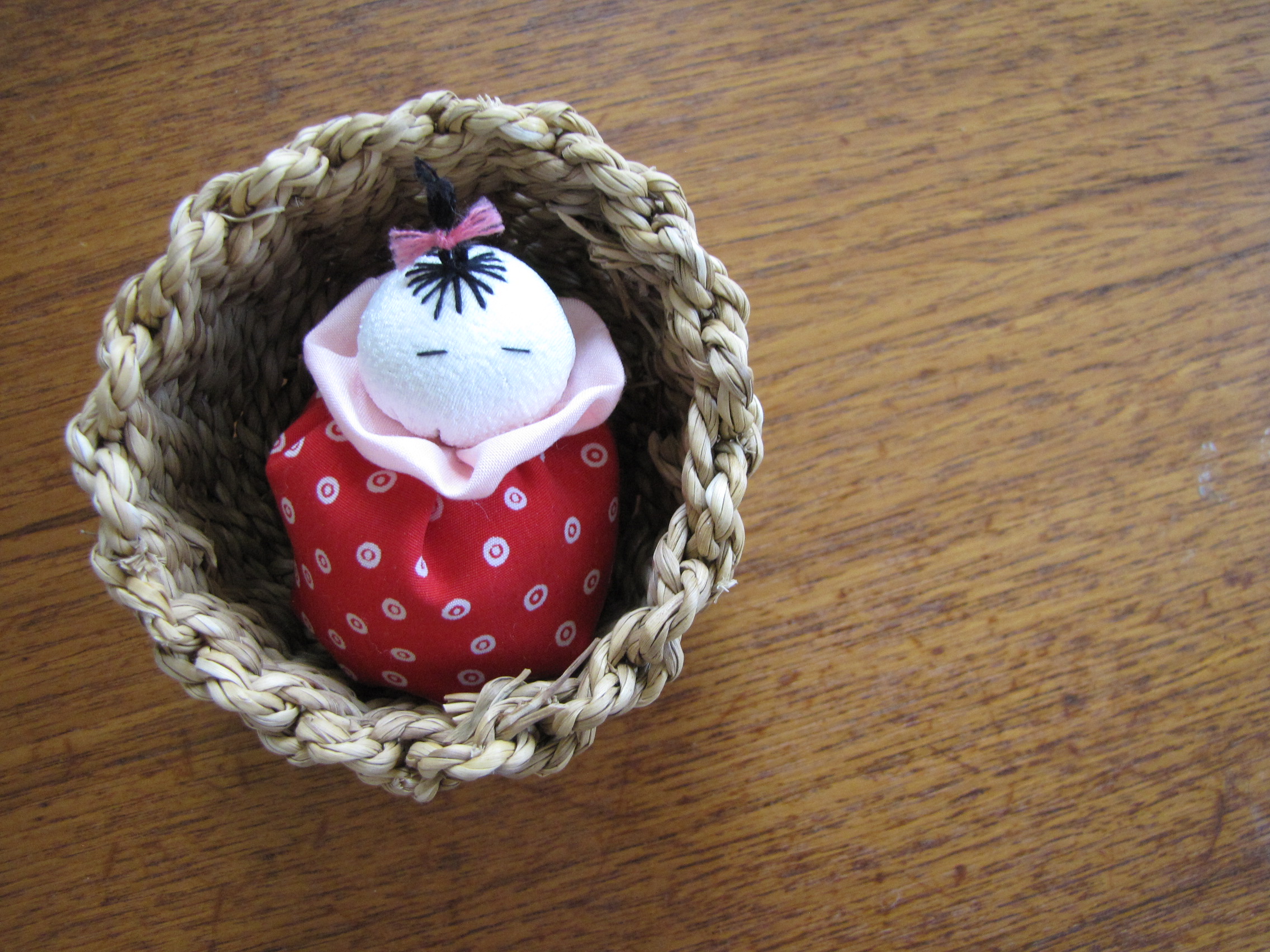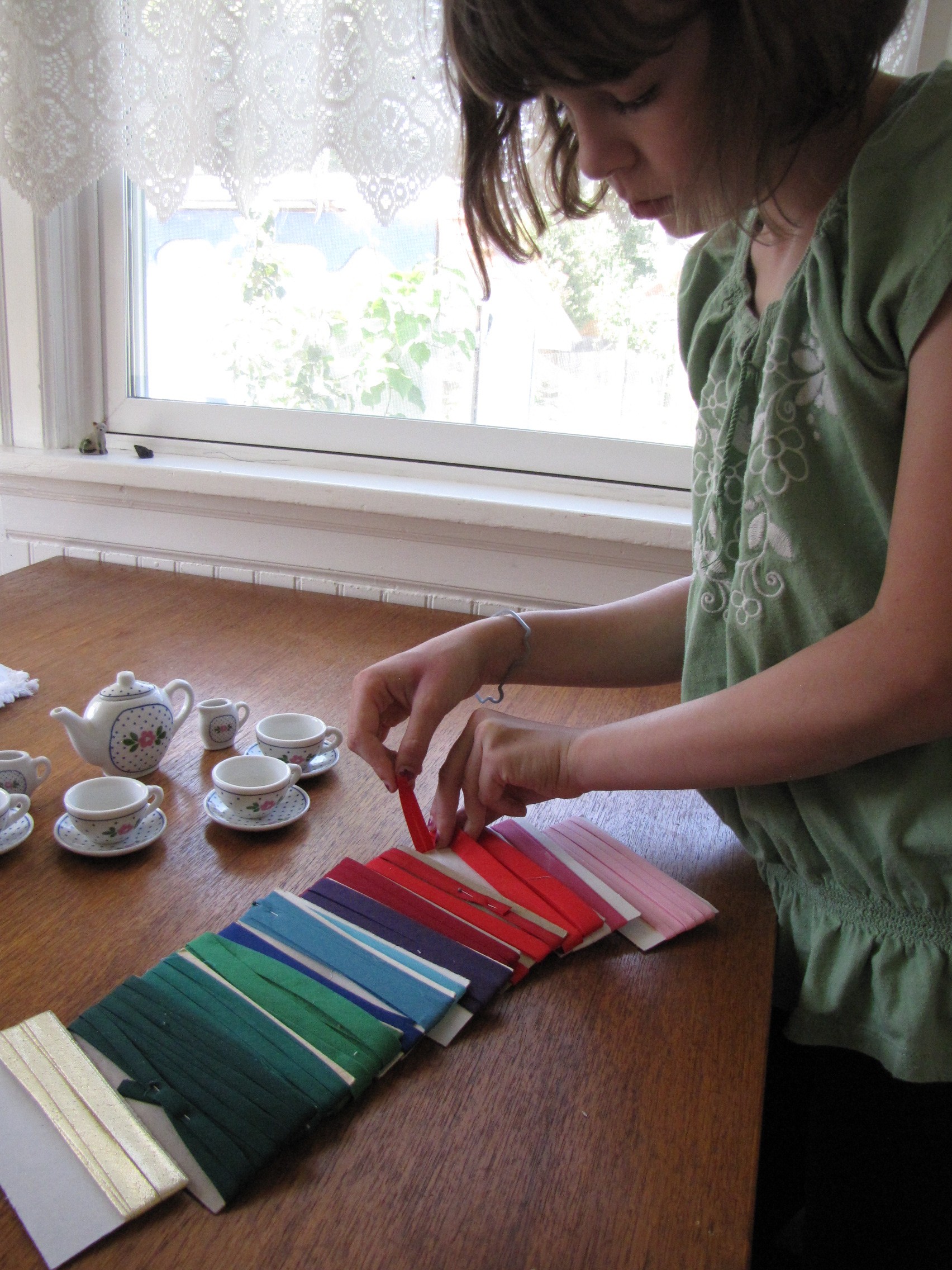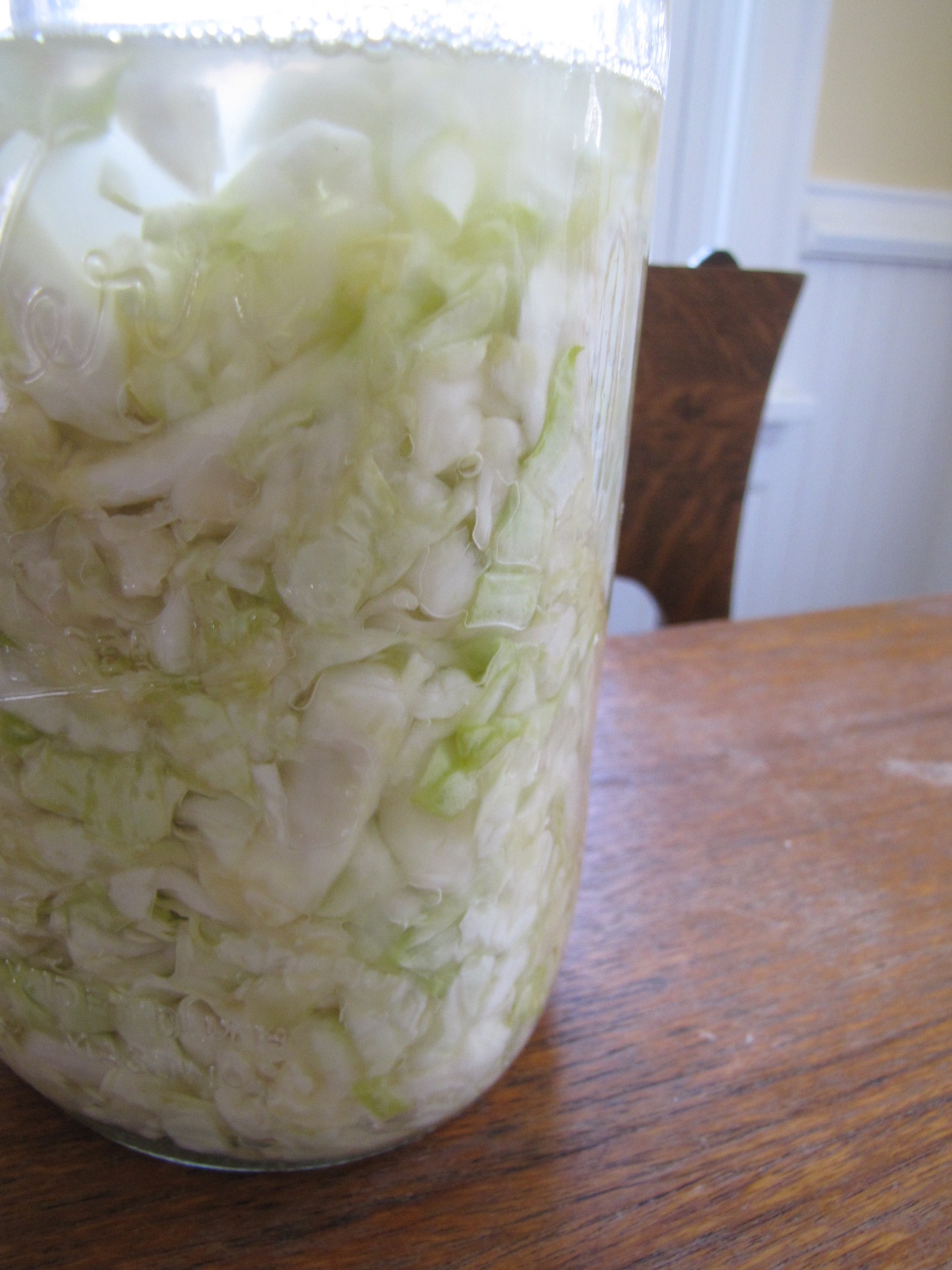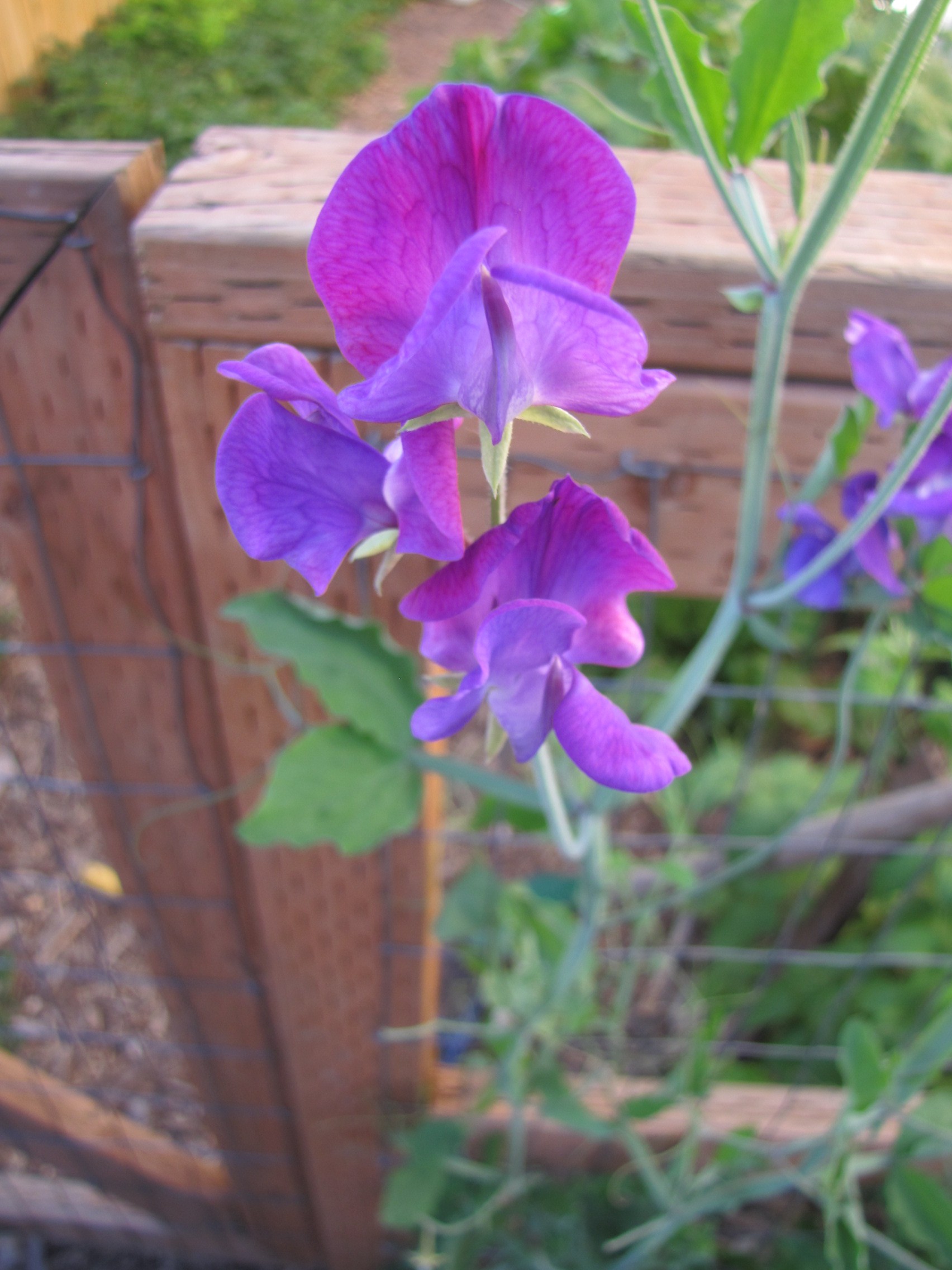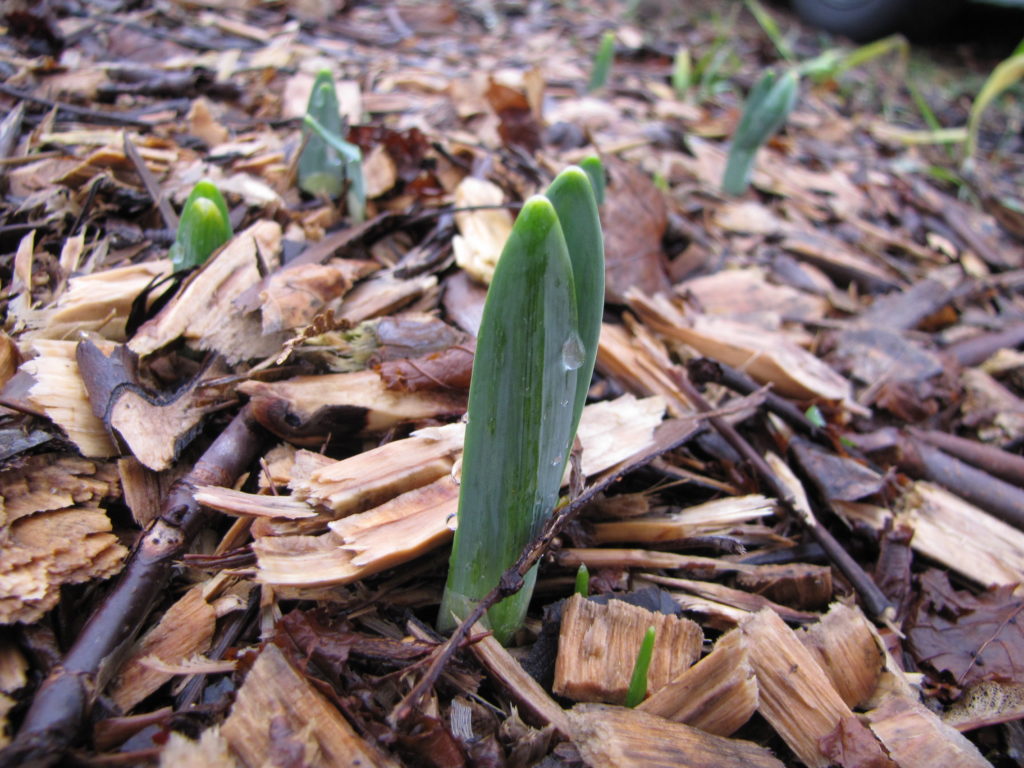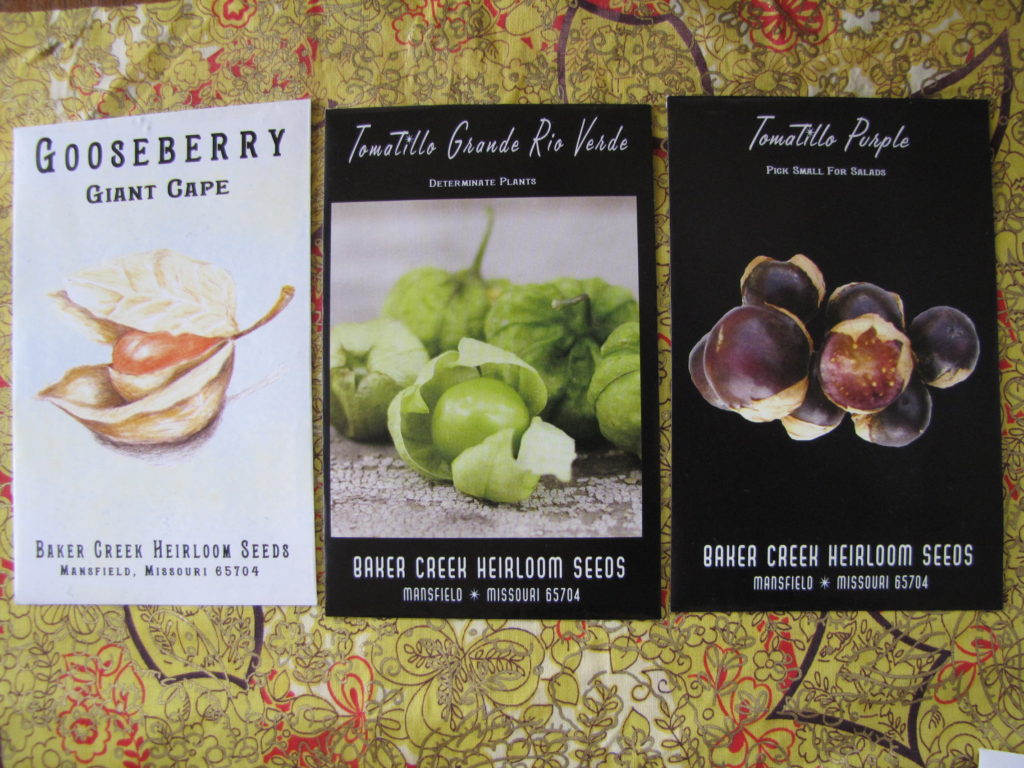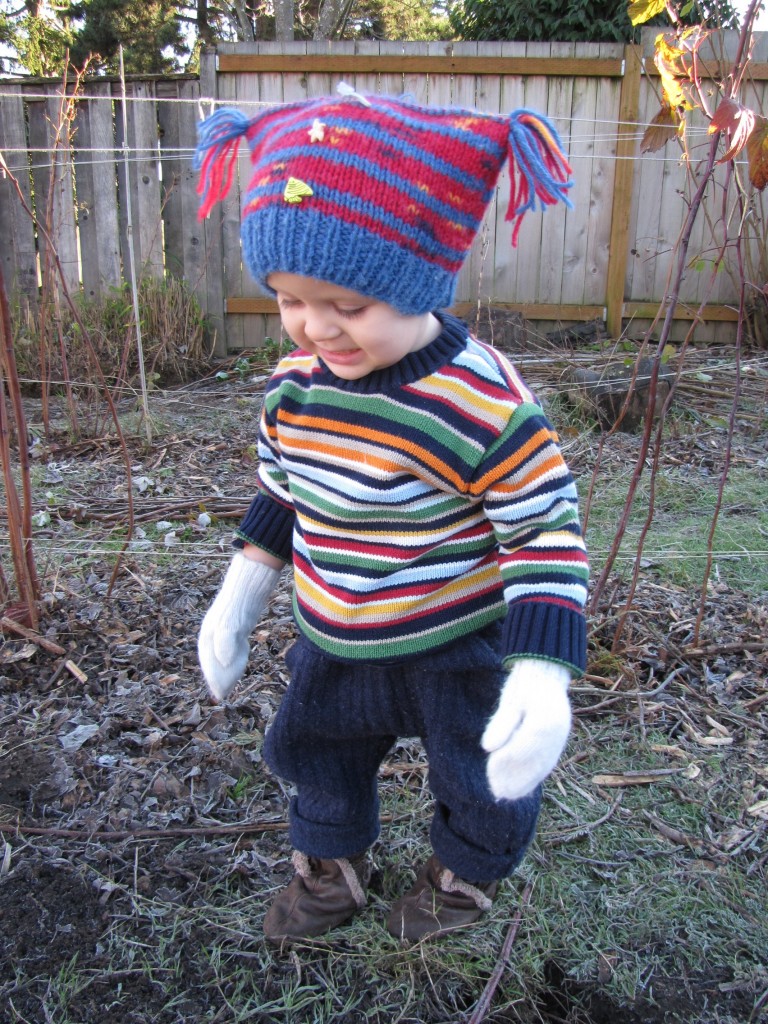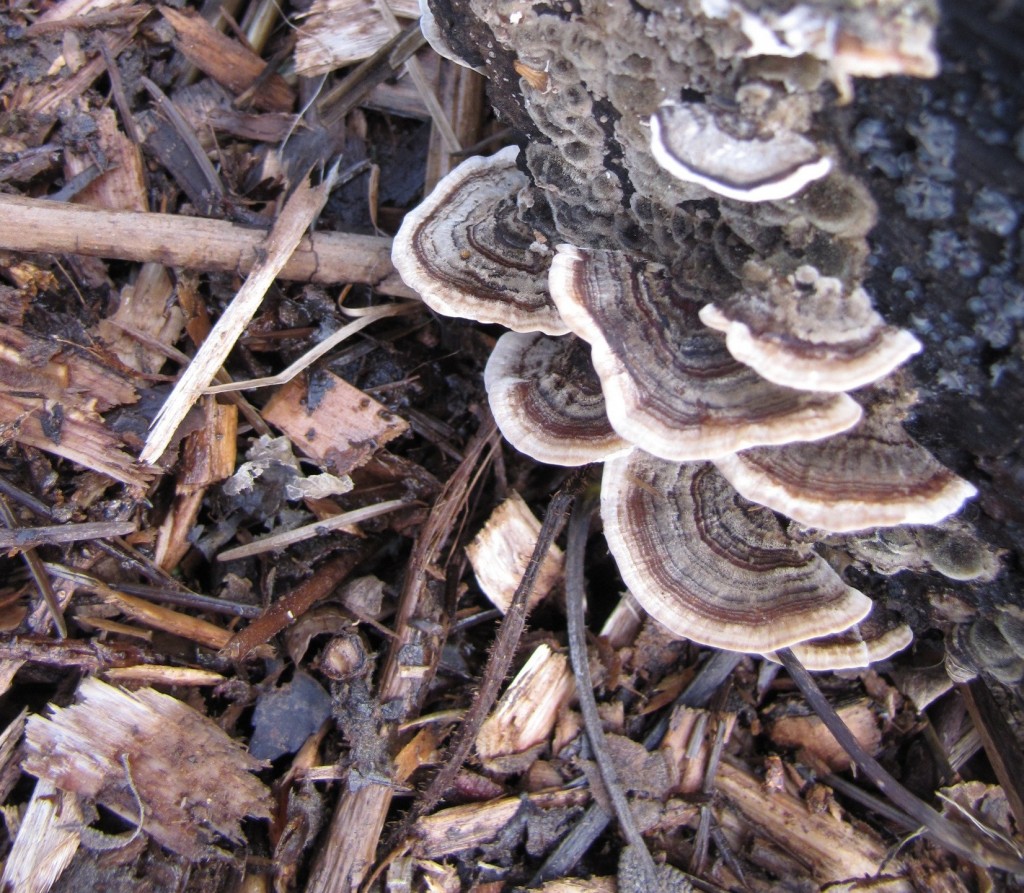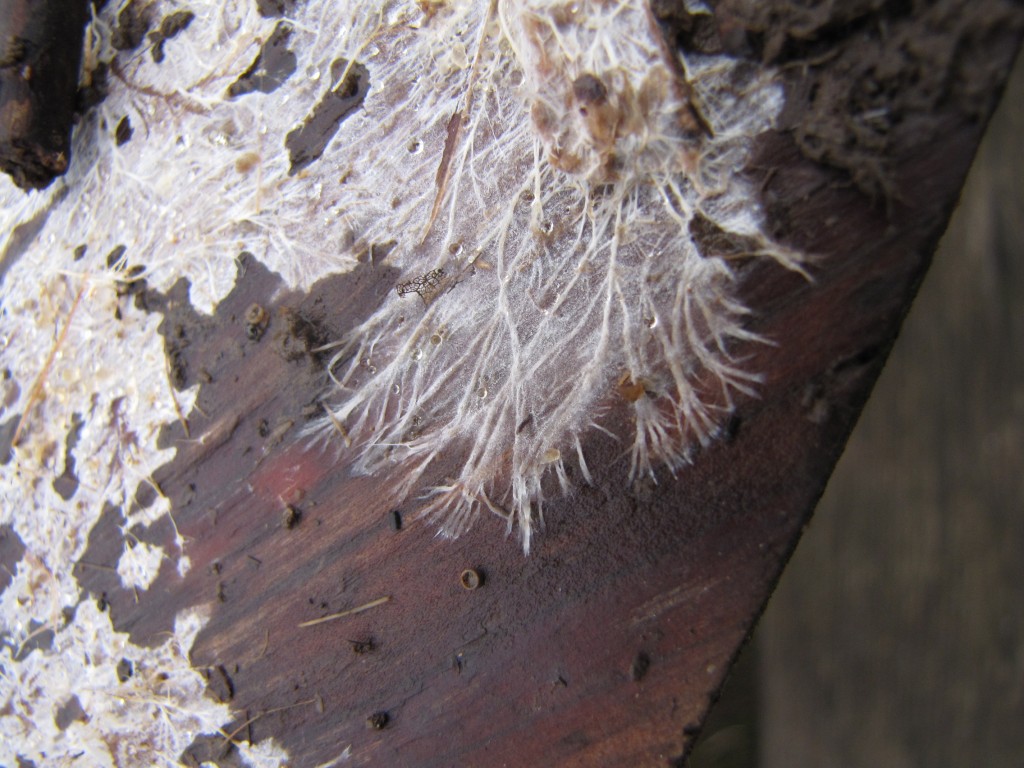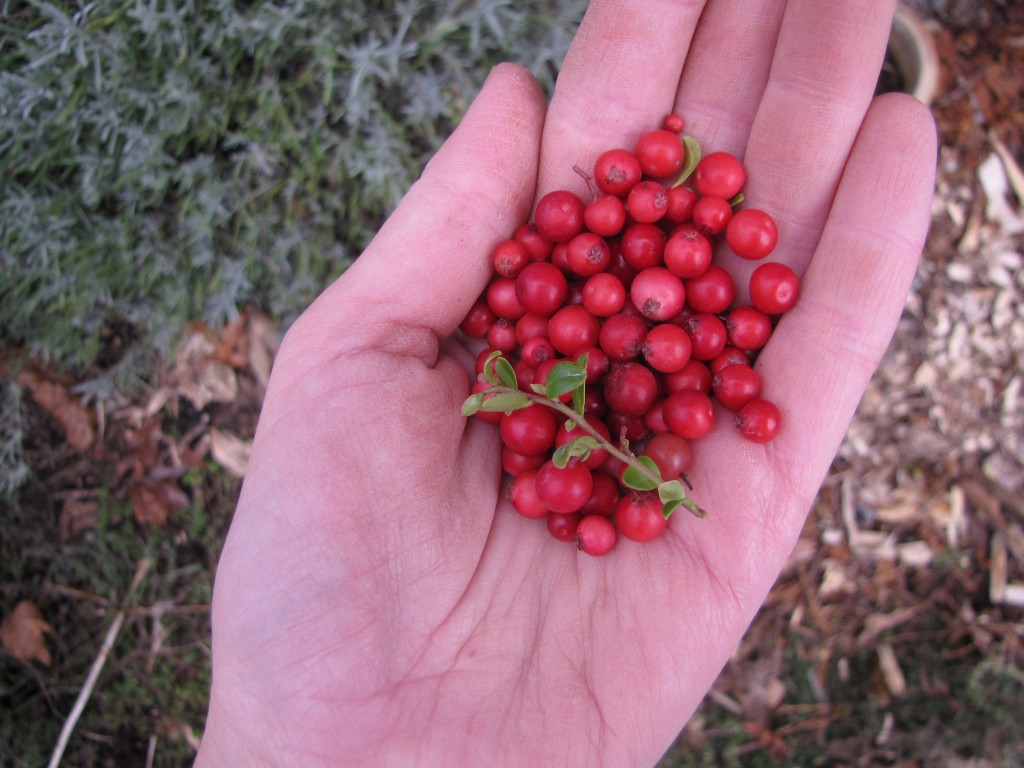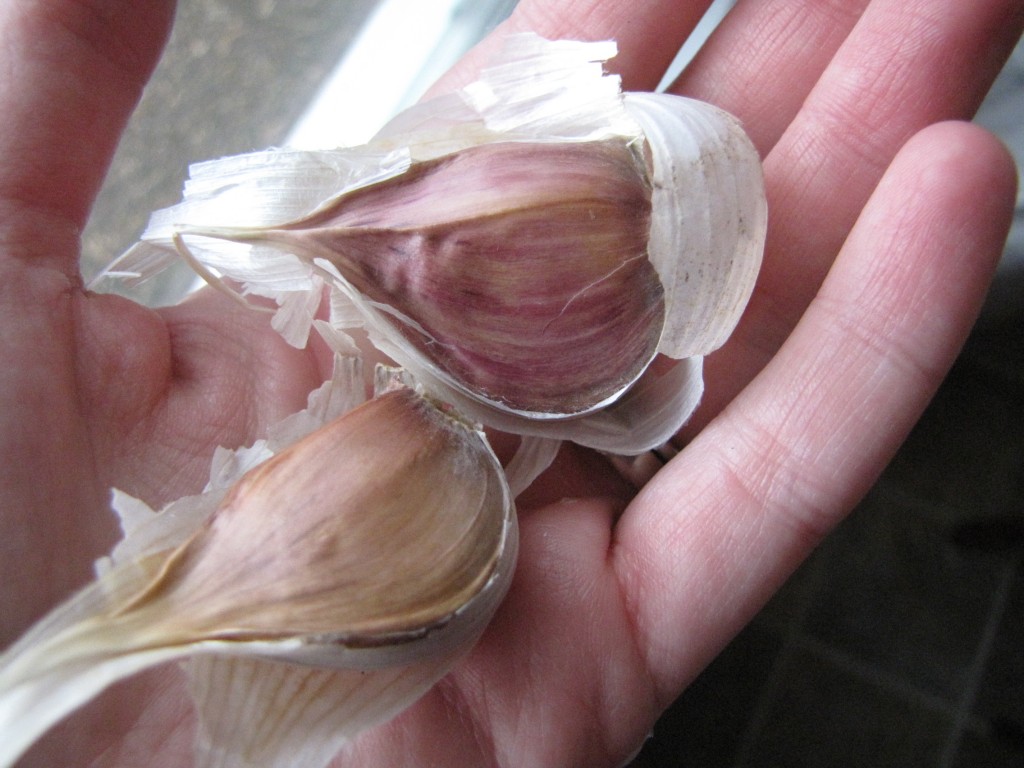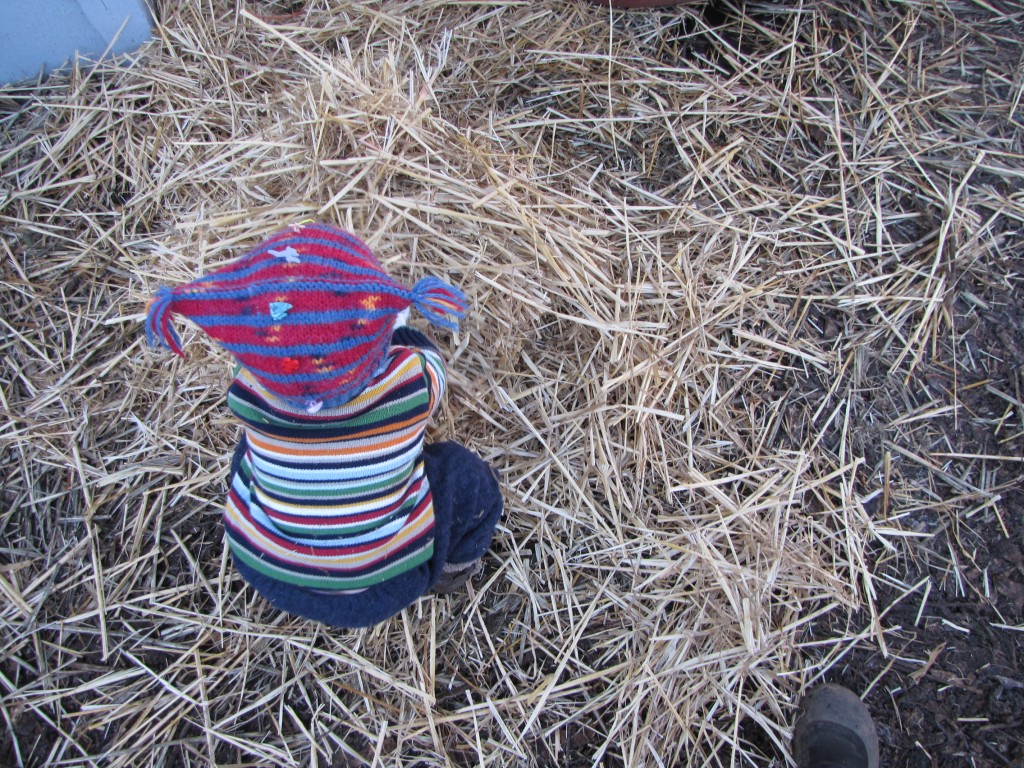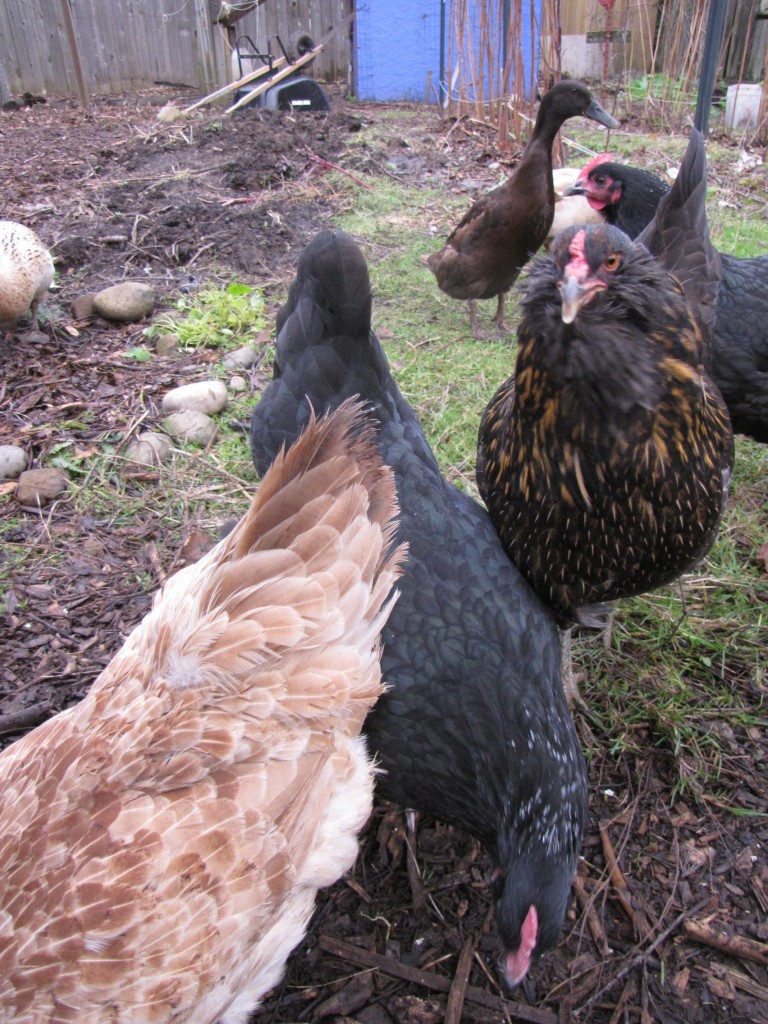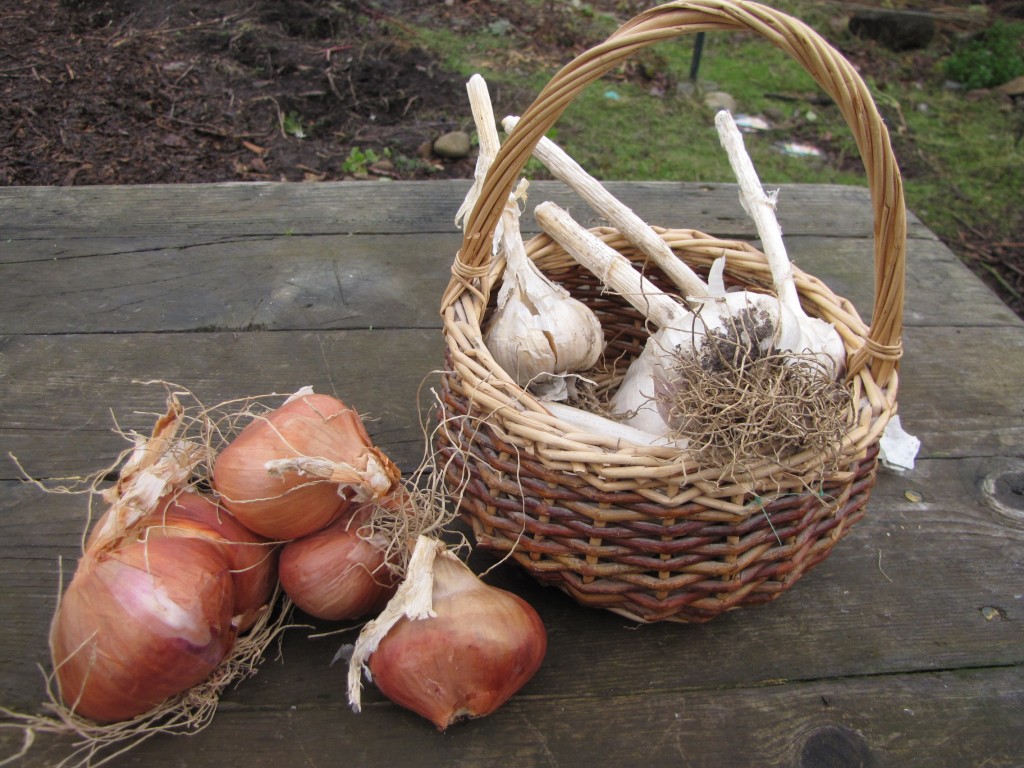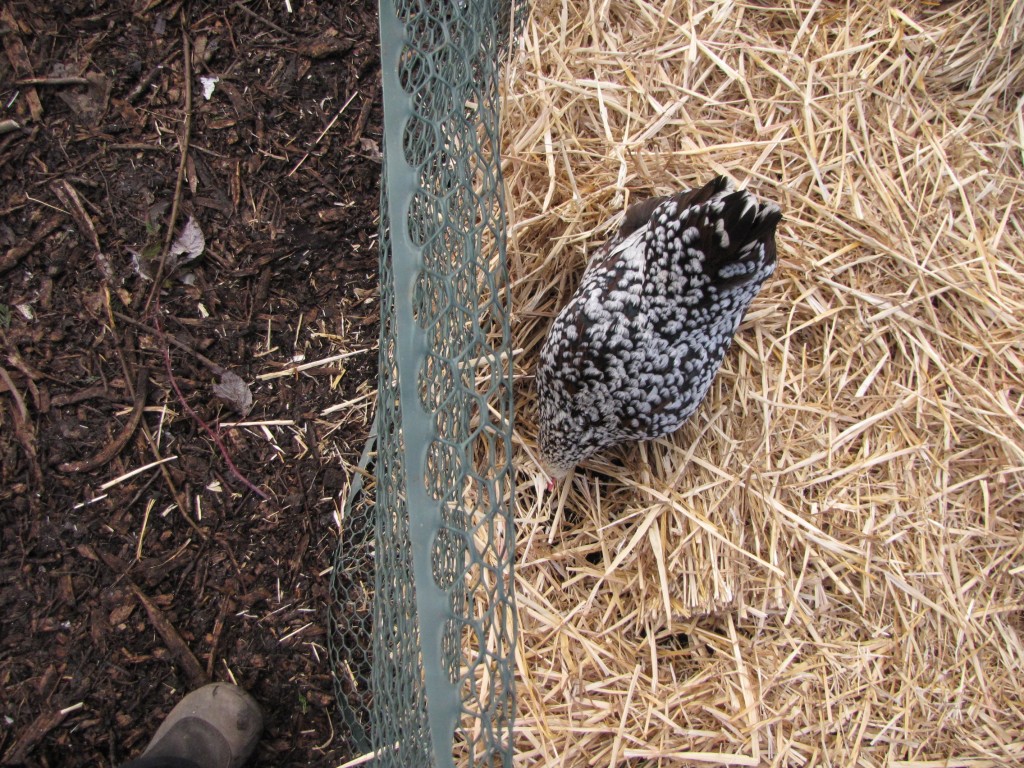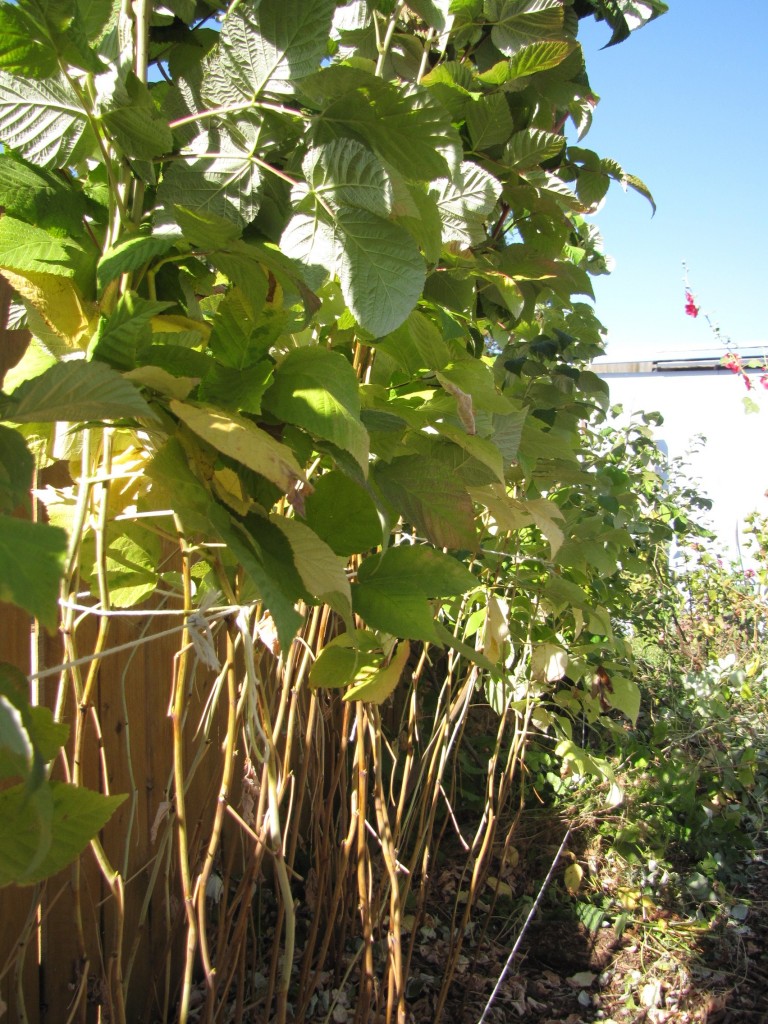Buttercups and Quince
Harvesting by myself in the garden this morning. Picked 65 lbs of produce – the bulk of which was winter squash and quince. The quince are just starting to ripen, so I didn’t pick very many, but a few were definitely ready. Quince (Cydonia oblonga) may not be the most lovely fruit in the world – looking like a misshapen pear covered in shedding fuzz – but the aroma from this crate of fruit was nothing short of heavenly. The scent is likened to guava and honey with overtones of vanilla and rose.
These ancient pomes are a fruit worth keeping in cultivation and in the kitchen. In fact when people ask me what fruit tree they should pick if they only have room for one, I always say, “quince!” Naturally dwarf, with a lovely shape, handsome bark, stunning fragrant pink flowers, quince are an excellent landscaping tree. Most varieties are self-fertile, so you only need one. A quince will also bear twice as much fruit as an apple tree the same size, and the fruit are pestered by far fewer insects than apples. I love them so much, I have five varieties in my garden, although three are too young to be producing yet.
My favorite way to enjoy quince is to turn it into membrillo – a Spanish quince paste made from cooking the high-pectin fruit for hours and hours until it becomes a beautiful orangey-red. It is then poured into a dish to cool, where it sets into a dense, slightly grainy jelly that is amazing on toast or with Manchego cheese.
Quince are very hard and most varieties cannot be eaten raw, but roasted they turn pink and sweet and fill the kitchen with a delicious fragrance. Any apple pie or applesauce is augmented significantly by the addition of quince to the recipe. Any roasted pork or poultry dish would also pair beautifully with roasted quince.
As I was ripping up dead winter squash vines and spent tomatoes, I ended up with the first few witner squash of the season. Most of the vines are still going strong, and there are dozens more squash that will be picked over the next few weeks.
Most of the squash I plant are Buttercup varieties. Buttercups are a type of Cucurbita maxima, and have the benefit of being a meal-sized squash, not a hulking behemoth the modern family has trouble making use of.
The one above is “Burgess Buttercup” and has consistently been rated the best-tasting winter squash variety. It is slightly dry with dense bright orange flesh. It is fantastic for roasting, and holds its shape in soups and stews. I have steamed and mashed it and made pumpkin rolls that were everyone’s favorite at the holidays.
Honestly, I’m looking forward to the end of the garden year. Volunteers have ended their shifts for 2015, and the next few weeks I will be harvesting by myself – more quince, oodles of winter squash, ground cherries, Inca Berries, lingonberries, and the like. Then, we’ll be down to cleaning up the garden, planting garlic, and growing only what our family eats off of for the winter (kale, leeks, etc). As much as I love running the garden project, winter is a nice sabbatical, and a chance to focus on indoor activities and hobbies.

![IMG_0156[1]](https://blog.parkrosepermaculture.com/blog/wp-content/uploads/2014/10/IMG_01561-e1443483416496.jpg)











































![IMG_0126[1]](https://blog.parkrosepermaculture.com/wp-content/uploads/2014/10/IMG_01261.jpg)
![IMG_0125[1]](https://blog.parkrosepermaculture.com/wp-content/uploads/2014/10/IMG_01251.jpg)
![IMG_0134[1]](https://blog.parkrosepermaculture.com/wp-content/uploads/2014/10/IMG_01341-e1413782005927.jpg)
![IMG_0137[1]](https://blog.parkrosepermaculture.com/wp-content/uploads/2014/10/IMG_01371.jpg)
![IMG_0122[1]](https://blog.parkrosepermaculture.com/wp-content/uploads/2014/10/IMG_01221.jpg)
![IMG_0116[1]](https://blog.parkrosepermaculture.com/wp-content/uploads/2014/10/IMG_01161.jpg)
![IMG_0103[1]](https://blog.parkrosepermaculture.com/wp-content/uploads/2014/10/IMG_01031-e1413248685844.jpg)
![IMG_0120[1]](https://blog.parkrosepermaculture.com/wp-content/uploads/2014/10/IMG_01201-e1413248823724.jpg)
![IMG_0106[1]](https://blog.parkrosepermaculture.com/wp-content/uploads/2014/10/IMG_01061.jpg)
![IMG_0114[1]](https://blog.parkrosepermaculture.com/wp-content/uploads/2014/10/IMG_01141.jpg)
![IMG_0086[1]](https://blog.parkrosepermaculture.com/wp-content/uploads/2014/10/IMG_00861.jpg)
![IMG_9690[1]](https://blog.parkrosepermaculture.com/wp-content/uploads/2014/09/IMG_96901.jpg)

![IMG_9577[1]](https://blog.parkrosepermaculture.com/wp-content/uploads/2014/09/IMG_95771.jpg)
![IMG_9723[1]](https://blog.parkrosepermaculture.com/wp-content/uploads/2014/09/IMG_97231.jpg)
![IMG_9736[1]](https://blog.parkrosepermaculture.com/wp-content/uploads/2014/09/IMG_97361-e1411447523418.jpg)
![IMG_9666[1]](https://blog.parkrosepermaculture.com/wp-content/uploads/2014/09/IMG_96661.jpg)
![IMG_9694[1]](https://blog.parkrosepermaculture.com/wp-content/uploads/2014/09/IMG_96941.jpg)
![IMG_9752[2]](https://blog.parkrosepermaculture.com/wp-content/uploads/2014/09/IMG_97522-e1411447921454.jpg)
![IMG_9697[1]](https://blog.parkrosepermaculture.com/wp-content/uploads/2014/09/IMG_96971.jpg)
![IMG_9747[1]](https://blog.parkrosepermaculture.com/wp-content/uploads/2014/09/IMG_97471.jpg)
![IMG_9782[1]](https://blog.parkrosepermaculture.com/wp-content/uploads/2014/09/IMG_97821.jpg)
![IMG_9497[1]](https://blog.parkrosepermaculture.com/wp-content/uploads/2014/06/IMG_94971.jpg)
![IMG_9498[1]](https://blog.parkrosepermaculture.com/wp-content/uploads/2014/06/IMG_94981.jpg)
![IMG_9499[1]](https://blog.parkrosepermaculture.com/wp-content/uploads/2014/06/IMG_94991.jpg)
![IMG_9465[1]](https://blog.parkrosepermaculture.com/wp-content/uploads/2014/06/IMG_94651.jpg)
![IMG_9469[1]](https://blog.parkrosepermaculture.com/wp-content/uploads/2014/06/IMG_94691.jpg)
![IMG_9460[1]](https://blog.parkrosepermaculture.com/wp-content/uploads/2014/06/IMG_94601.jpg)
![IMG_9456[1]](https://blog.parkrosepermaculture.com/wp-content/uploads/2014/06/IMG_94561.jpg)
![IMG_9459[1]](https://blog.parkrosepermaculture.com/wp-content/uploads/2014/06/IMG_94591.jpg)
![IMG_9471[1]](https://blog.parkrosepermaculture.com/wp-content/uploads/2014/06/IMG_94711.jpg)
![IMG_9473[1]](https://blog.parkrosepermaculture.com/wp-content/uploads/2014/06/IMG_94731.jpg)
![IMG_9474[1]](https://blog.parkrosepermaculture.com/wp-content/uploads/2014/06/IMG_94741.jpg)
![IMG_9475[1]](https://blog.parkrosepermaculture.com/wp-content/uploads/2014/06/IMG_94751.jpg)
![IMG_9449[1]](https://blog.parkrosepermaculture.com/wp-content/uploads/2014/06/IMG_94491.jpg)
![IMG_9487[1]](https://blog.parkrosepermaculture.com/wp-content/uploads/2014/06/IMG_94871.jpg)
![IMG_9485[1]](https://blog.parkrosepermaculture.com/wp-content/uploads/2014/06/IMG_94851.jpg)
![IMG_9425[1]](https://blog.parkrosepermaculture.com/wp-content/uploads/2014/06/IMG_94251.jpg)
![IMG_9430[1]](https://blog.parkrosepermaculture.com/wp-content/uploads/2014/06/IMG_94301.jpg)
![IMG_9434[1]](https://blog.parkrosepermaculture.com/wp-content/uploads/2014/06/IMG_94341.jpg)
![IMG_9433[1]](https://blog.parkrosepermaculture.com/wp-content/uploads/2014/06/IMG_94331.jpg)
![IMG_9439[1]](https://blog.parkrosepermaculture.com/wp-content/uploads/2014/06/IMG_94391.jpg)
![IMG_9427[1]](https://blog.parkrosepermaculture.com/wp-content/uploads/2014/06/IMG_94271.jpg)
![IMG_9417[1]](https://blog.parkrosepermaculture.com/wp-content/uploads/2014/06/IMG_94171.jpg)
![IMG_9368[1]](https://blog.parkrosepermaculture.com/wp-content/uploads/2014/05/IMG_93681.jpg)
![IMG_9367[1]](https://blog.parkrosepermaculture.com/wp-content/uploads/2014/05/IMG_93671.jpg)
![IMG_9369[1]](https://blog.parkrosepermaculture.com/wp-content/uploads/2014/06/IMG_93691.jpg)
![IMG_9371[1]](https://blog.parkrosepermaculture.com/wp-content/uploads/2014/06/IMG_93711.jpg)
![IMG_9405[1]](https://blog.parkrosepermaculture.com/wp-content/uploads/2014/06/IMG_94051.jpg)
![IMG_9401[1]](https://blog.parkrosepermaculture.com/wp-content/uploads/2014/06/IMG_94011.jpg)
![IMG_9407[1]](https://blog.parkrosepermaculture.com/wp-content/uploads/2014/06/IMG_94071.jpg)
![IMG_9408[1]](https://blog.parkrosepermaculture.com/wp-content/uploads/2014/06/IMG_94081.jpg)

